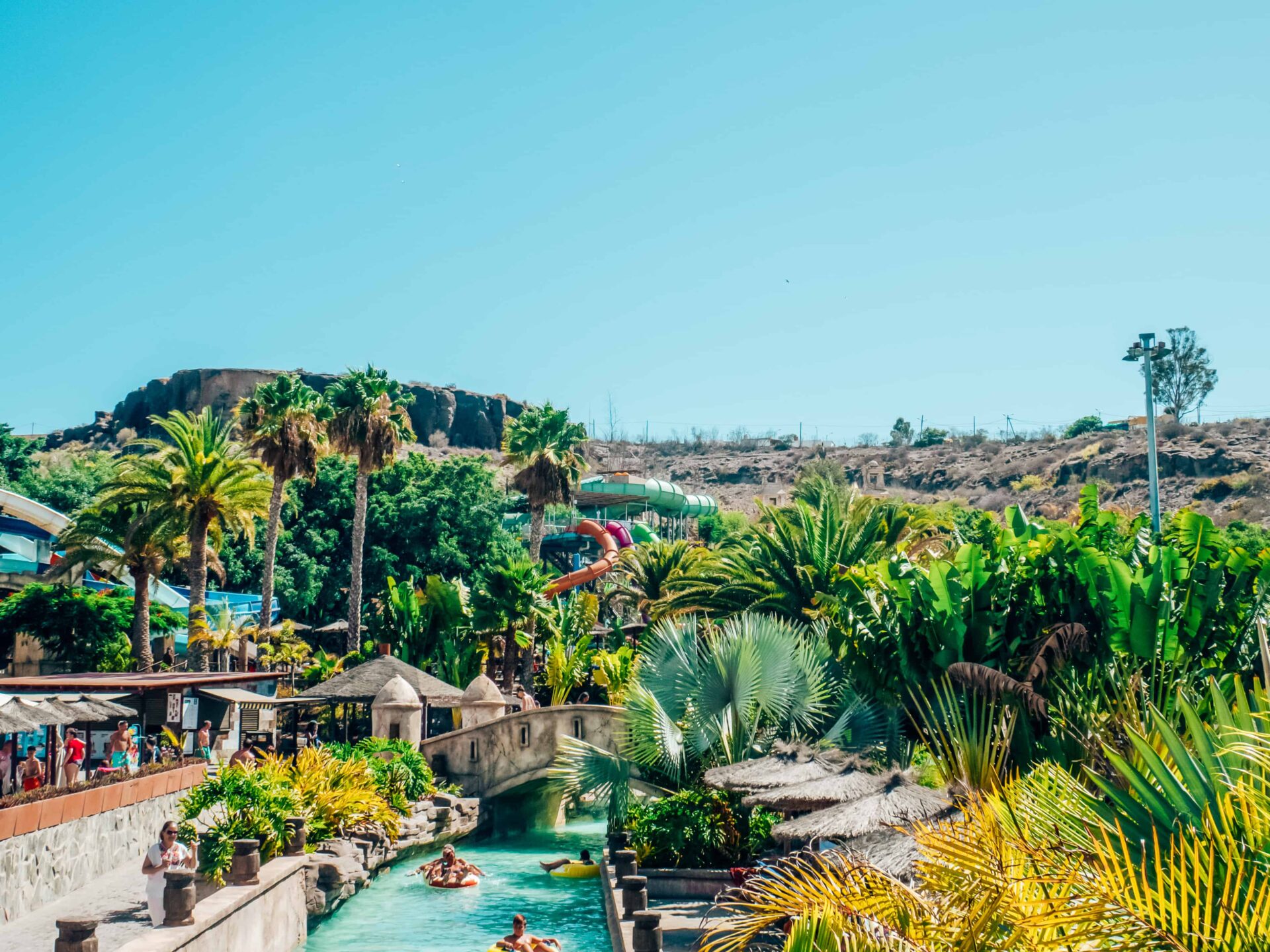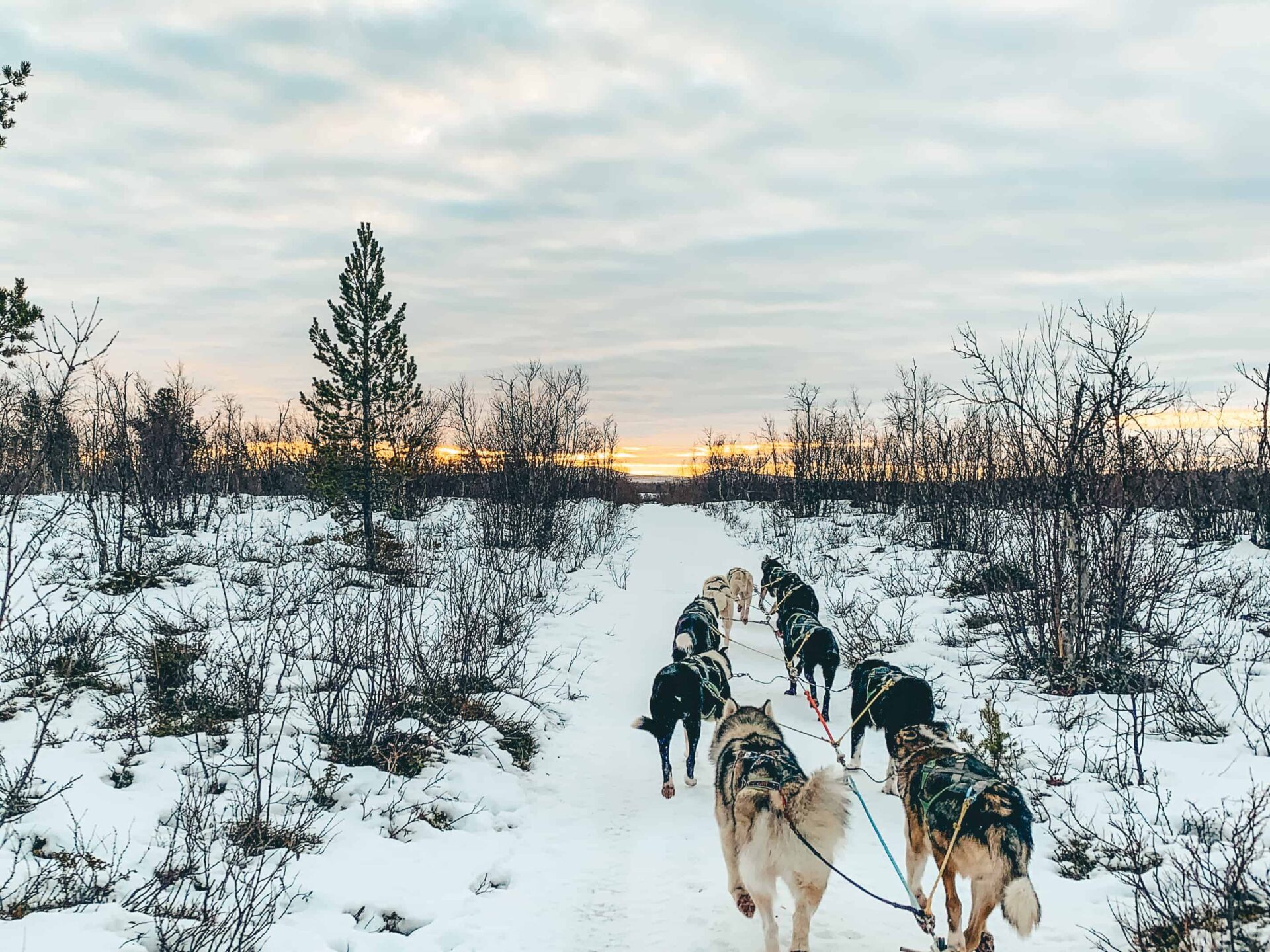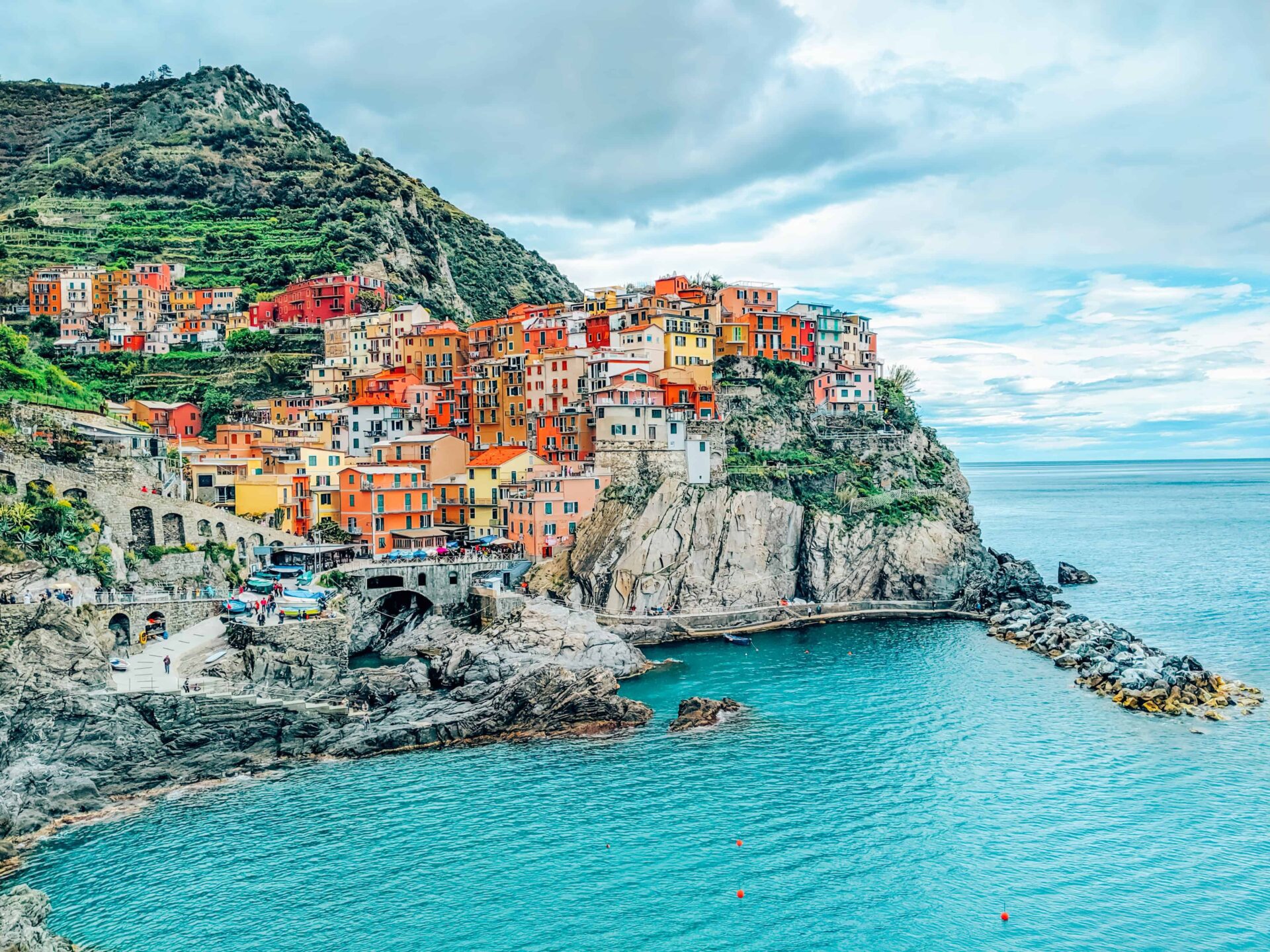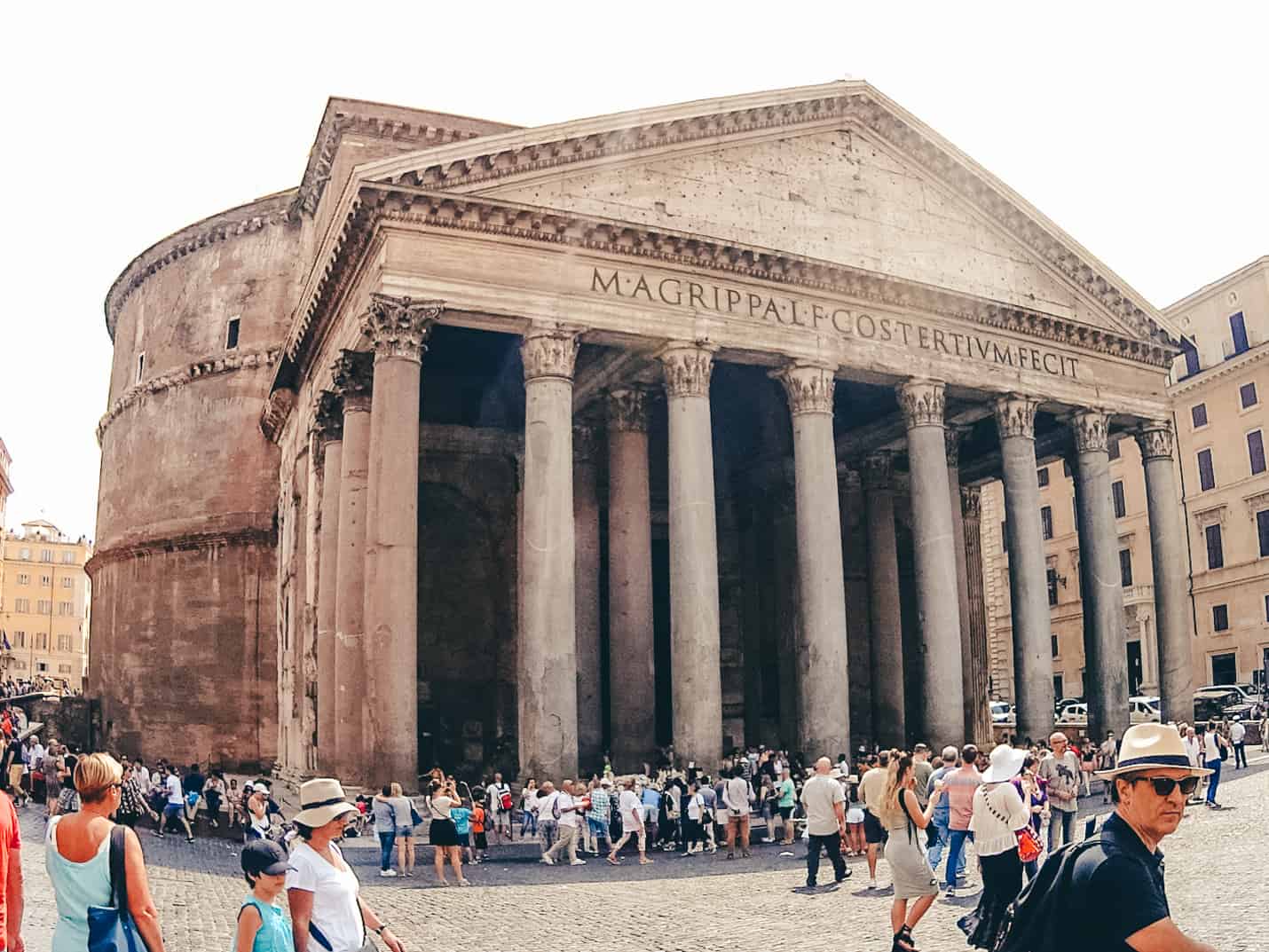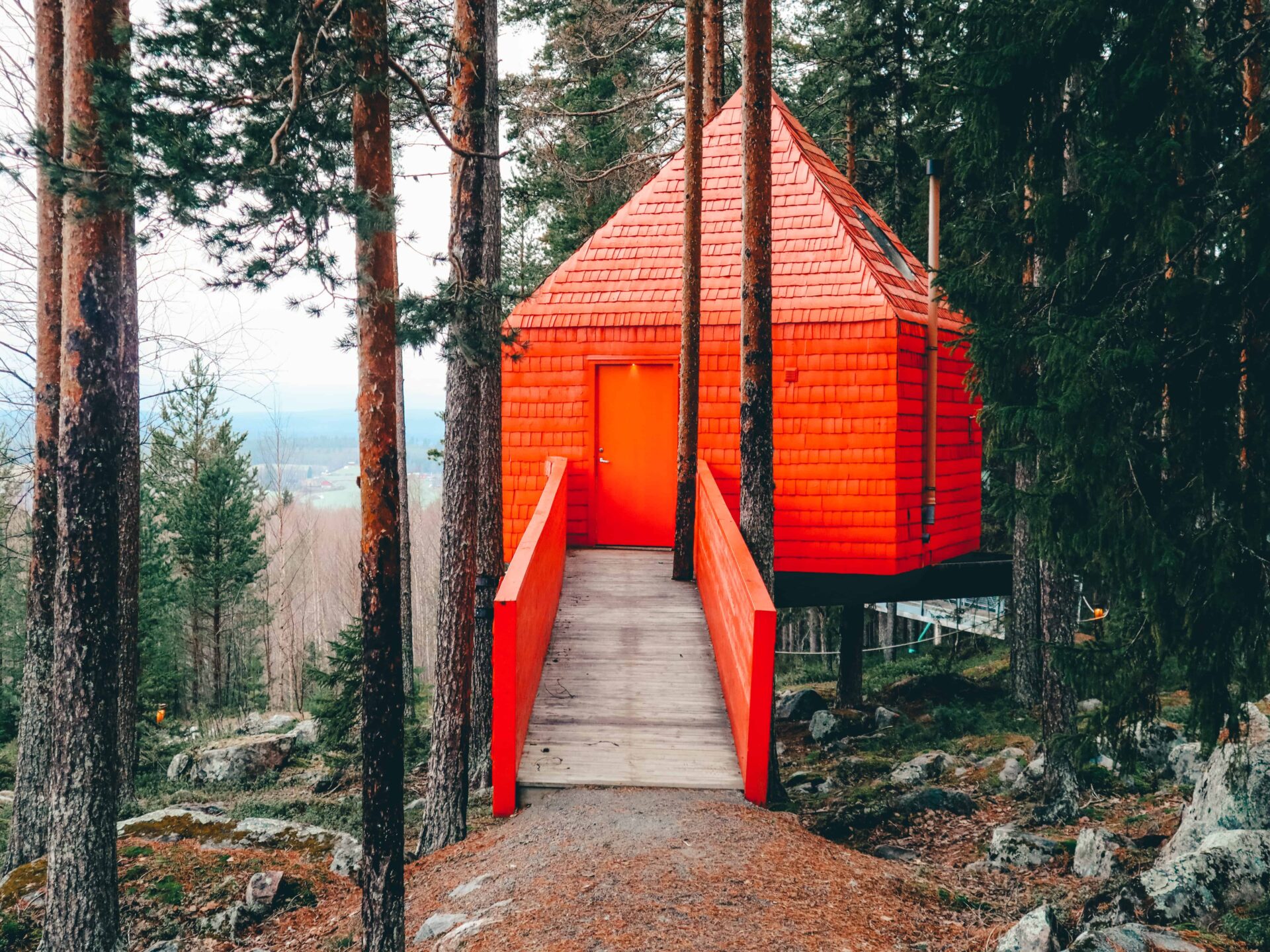Gran Canaria, a gem of the Canary Islands, welcomes travelers with an abundance of fascinating attractions. From sun-drenched beaches to breathtaking natural areas and vibrant urban centers, the island offers a diverse travel experience. Discover the top 15 attractions that this island has to offer, complete with detailed descriptions and admission prices in euros. Whether you’re looking for relaxation, adventure, or cultural exploration, Gran Canaria has something for everyone. Dive into this guide and prepare for an unforgettable journey through the enchanting places of Gran Canaria.
Dolphin and whale tour
Gran Canaria is located in the Atlantic Ocean, making it the ideal location for dolphin and whale watching. Large groups of these dolphins and whales live around the entire island. A boat trip along these beautiful sea creatures is definitely recommended. Some of the cruise boats even have a glass bottom, making the natural habitat even more visible. Most tours also offer the option of being picked up at your hotel.
Costs: for a 2.5-hour cruise, you'll usually pay around €35 for an adult. For children, there is a reduced rate of about €20.
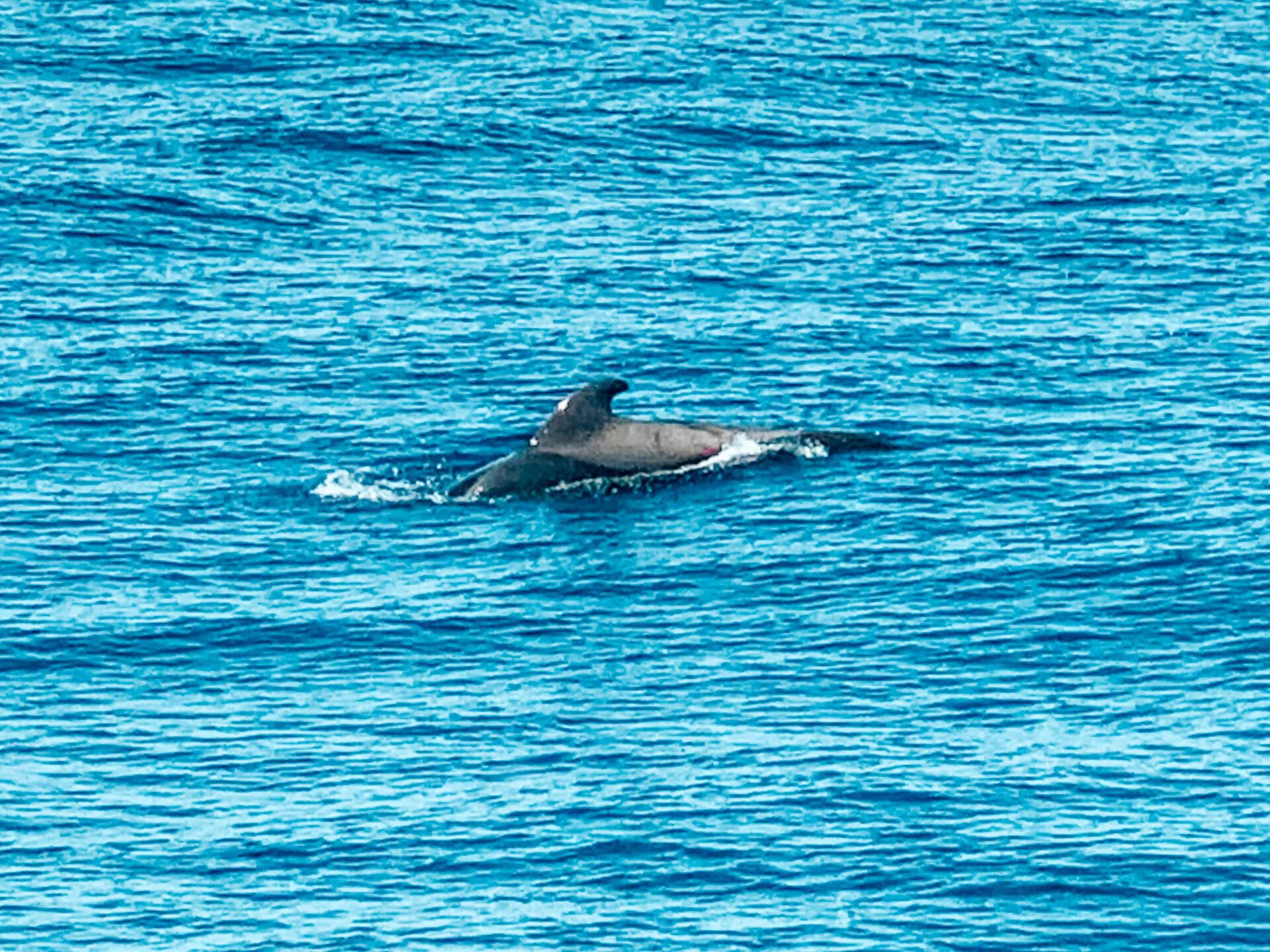
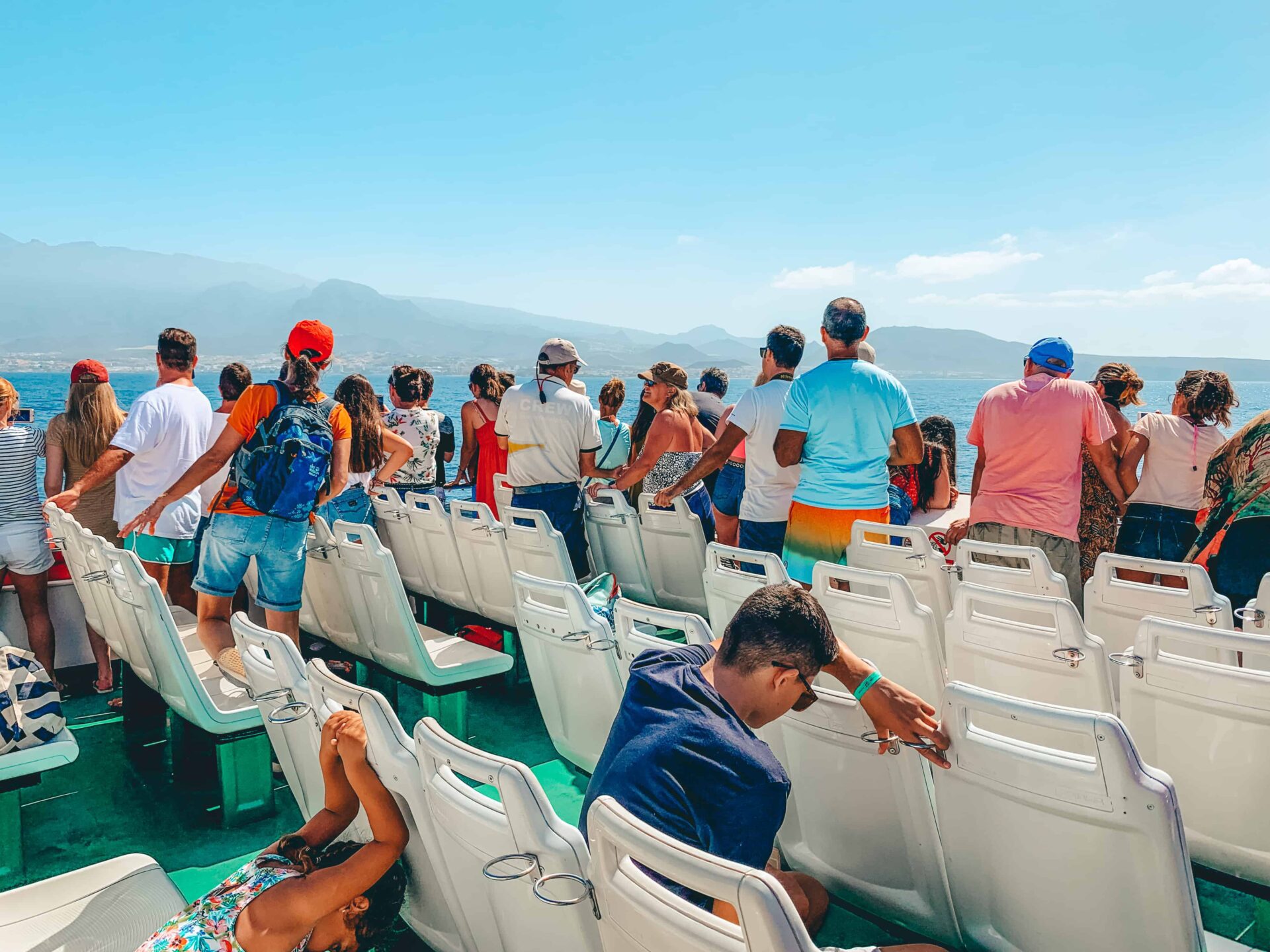
Roque Nublo
Roque Nublo is one of the most famous symbols of Gran Canaria. This gigantic rock is 67 meters high and consists entirely of basalt rock. The rock is located at 1813 meters above sea level in the middle of the island, making it visible from a wide area and from multiple sides. In addition to being able to see this beautiful rock well from the car, there is also a hiking trail to it. This is hiking trail GC-600, and from the parking lot it is about a 30-minute walk. However, this walk is quite challenging, with occasional steep climbs. From the rock you have a beautiful view over the entire island and with good weather even Tenerife, the largest Canary Island, is visible.
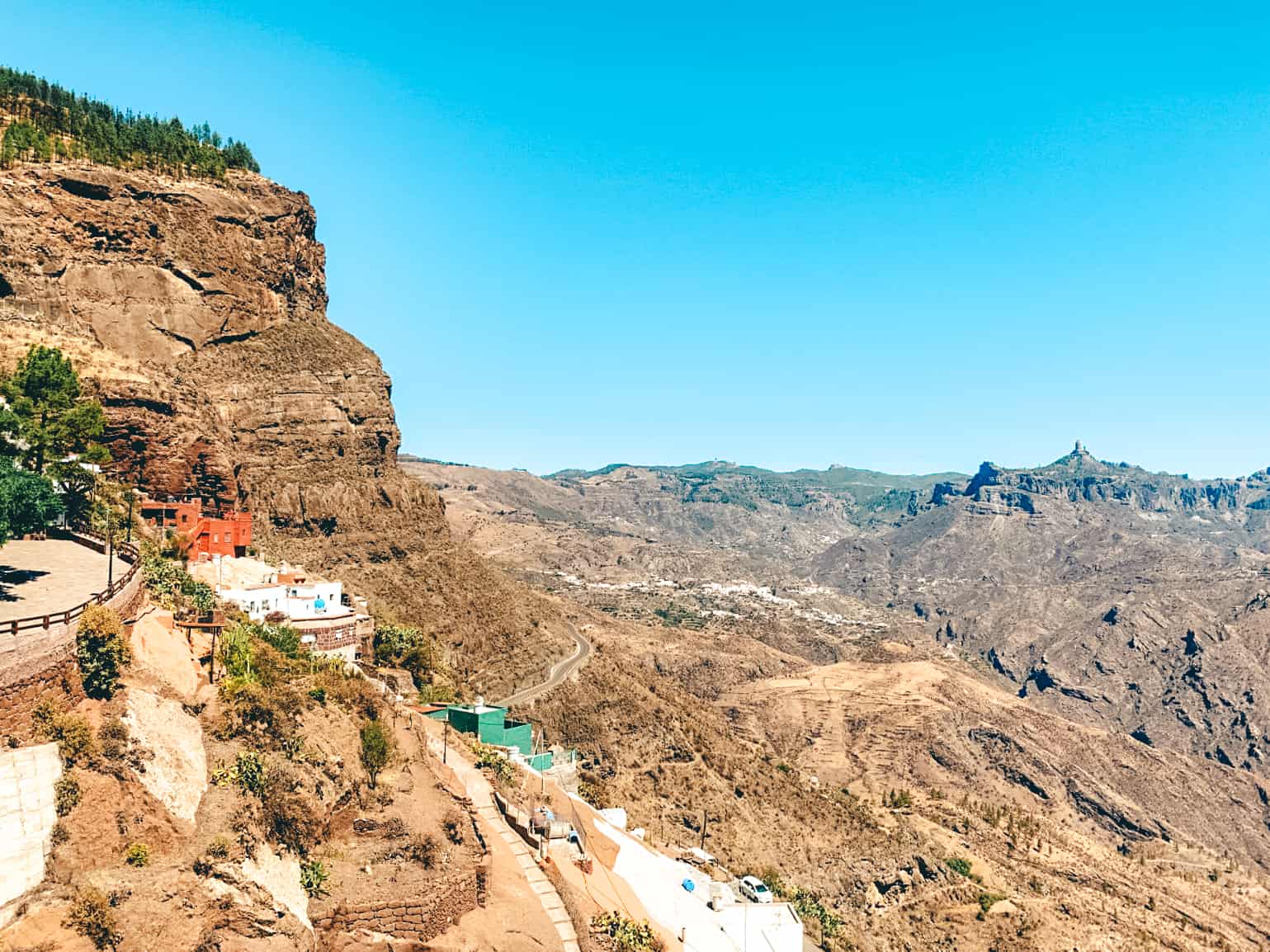
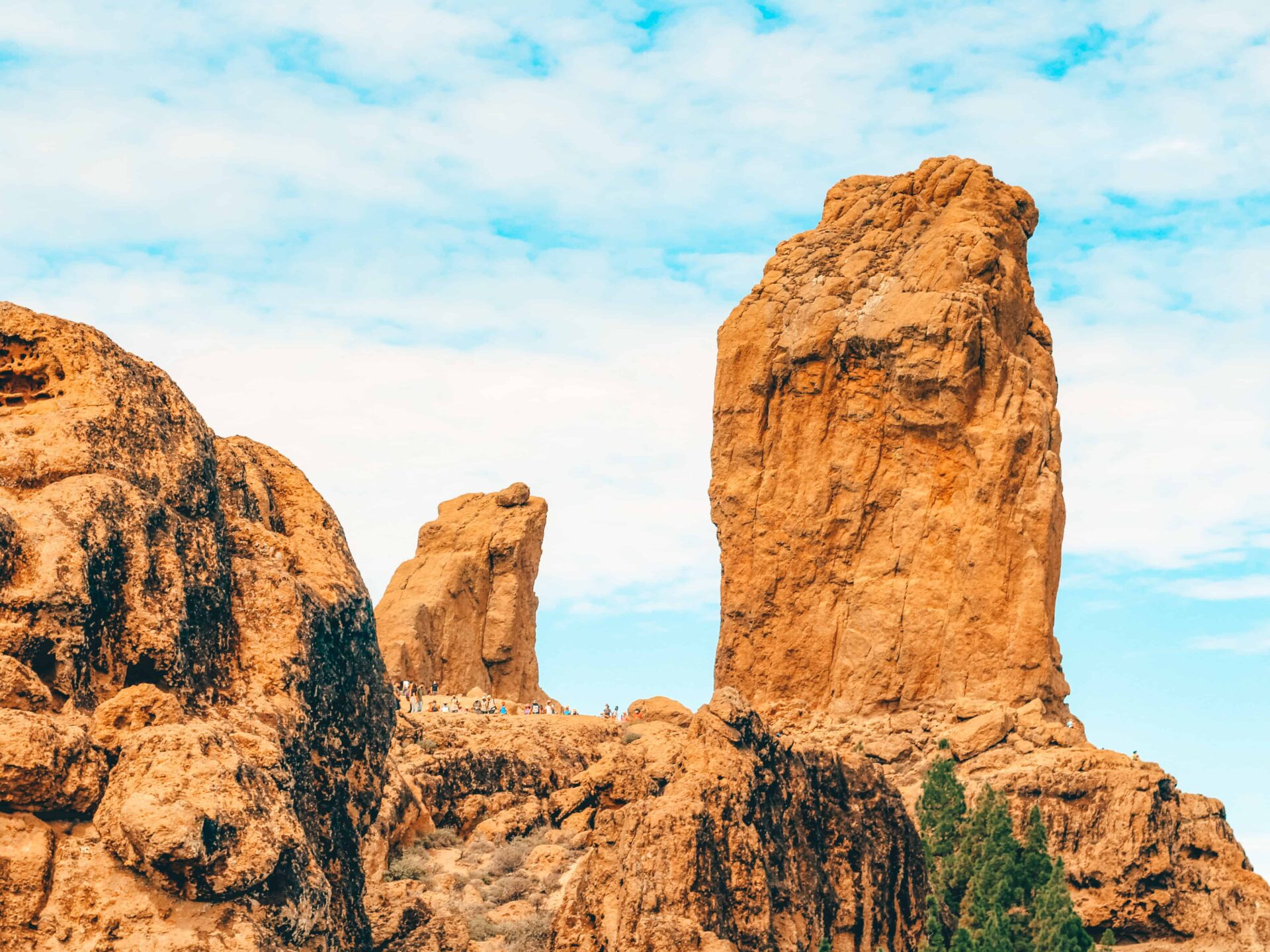
Las Palmas and La Vegueta
Las Palmas is the capital of Gran Canaria. The official name of the city is actually Las Palmas de Gran Canaria. The city is located in the north of the island. Visitors who arrive by sea on this island almost always arrive in the port of this city. About half of the population of the island lives in the capital, making it the largest city on the island.
The oldest district of this city, called La Vegueta, is home to many beautiful attractions. La Vegueta is a beautiful district to take a city walk and discover the beauty of the district. Visit Plaza de Santa Ana, Catedral de Las Palmas, Casas Consistoriales de Las Palmas, and Casa de Colón, among others. Casa de Colón is a museum dedicated to the voyages of Columbus, who is said to have stayed here for a while. In addition, there are numerous shops, restaurants, and cafes. Every Sunday, there is also a market here with music and (children’s) entertainment.
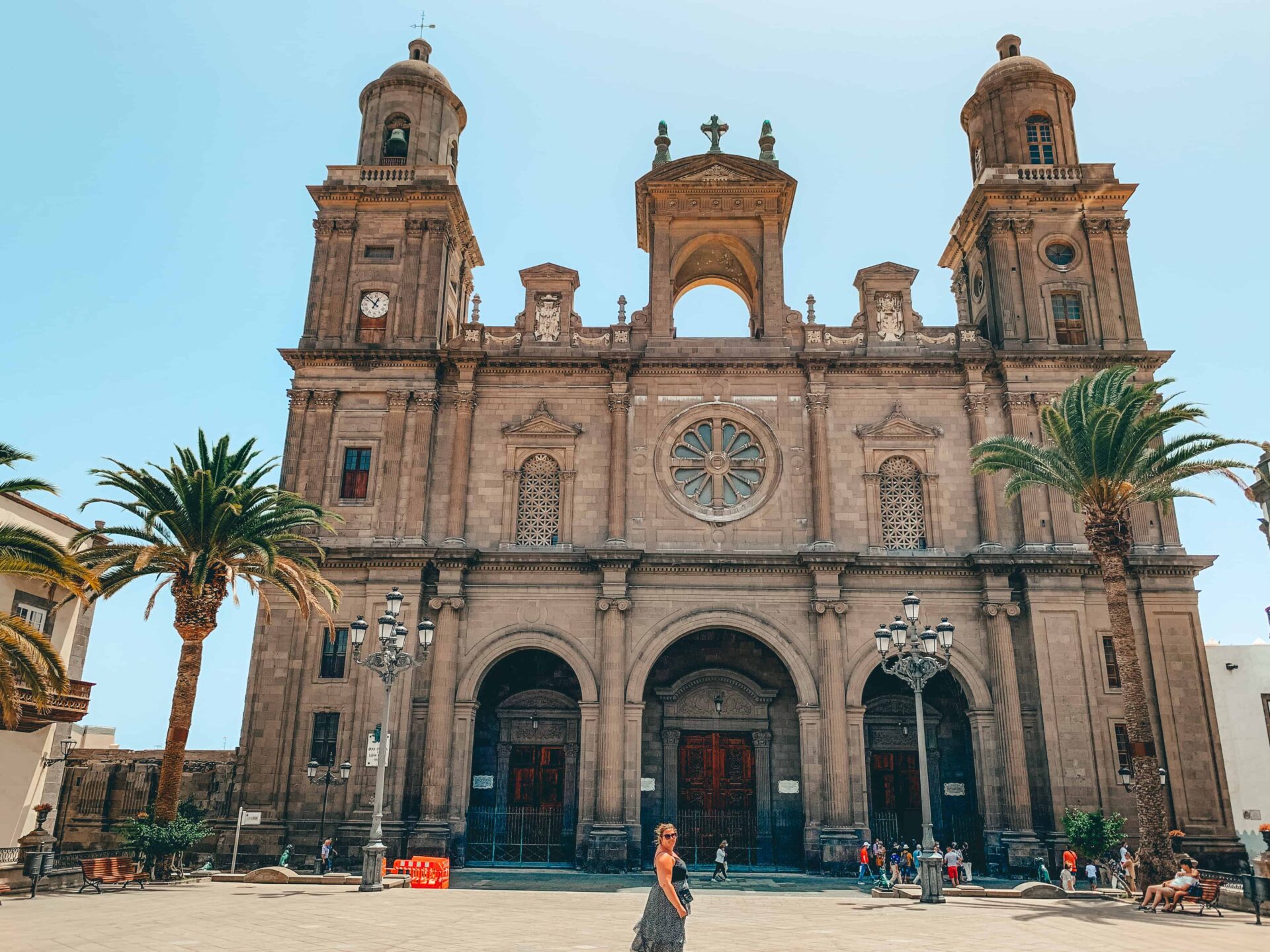
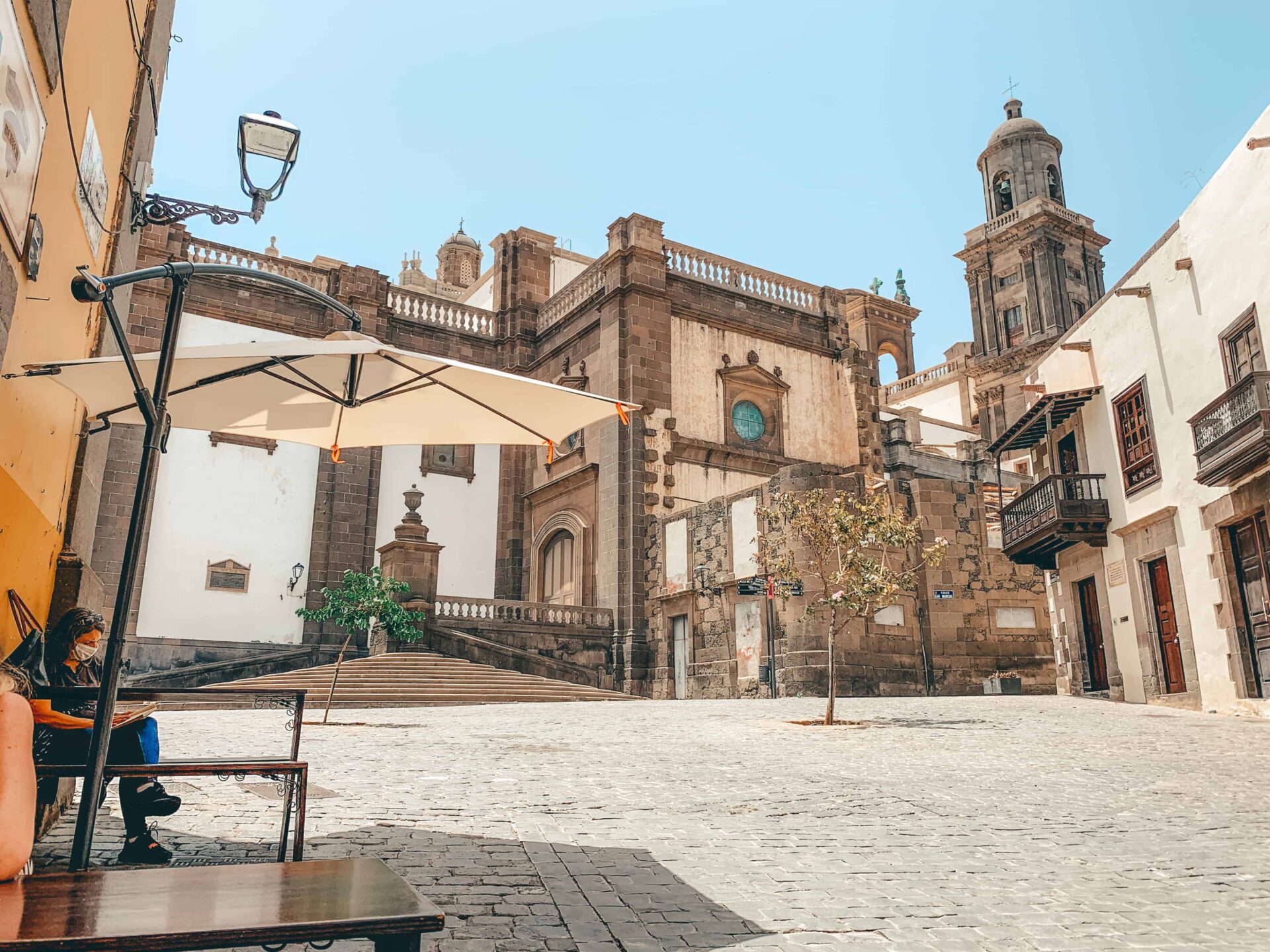
Dunas de Maspalomas
Dunas de Maspalomas is located in the south of the island between the beach of Playa del Ingles and Maspalomas. This dune landscape is about 6 kilometers long and alternates between 1 and 2 kilometers wide. In addition to the dunes, which can be up to 20 meters high, there is also a lagoon and palm forest called El Oasis. These dunes are very suitable for a beach walk or even a camel ride. In addition, it is known as a beautiful place to enjoy the sunset.
Cost: For a camel ride of about 30 minutes including a guide, you'll pay around €15 for an adult. For children, there is a lower rate of €10.
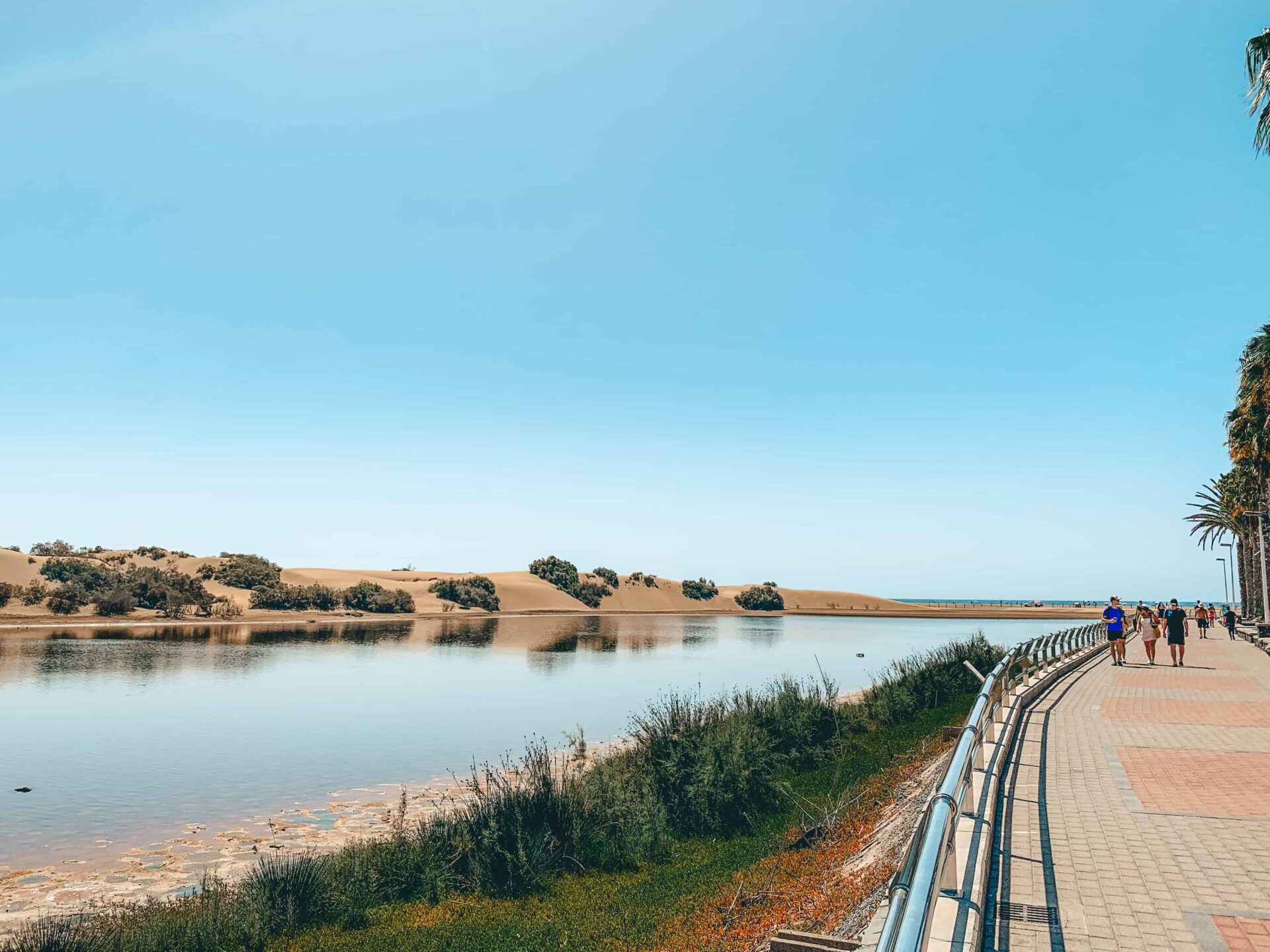
Teror
Teror is known as the most beautiful village in Gran Canaria and is located inland on the north side of the island. This village is an important pilgrimage site for the island’s residents. A pilgrimage to the Basílica de Nuestra Señora del Pino takes place every year. A visit to this Basilica should not be missed during a visit to this village. In addition, the village is characterized by its many colorful houses and authentic architecture. On Sunday mornings, there is a local market, and the restaurants offer many of the popular Canarian dishes.
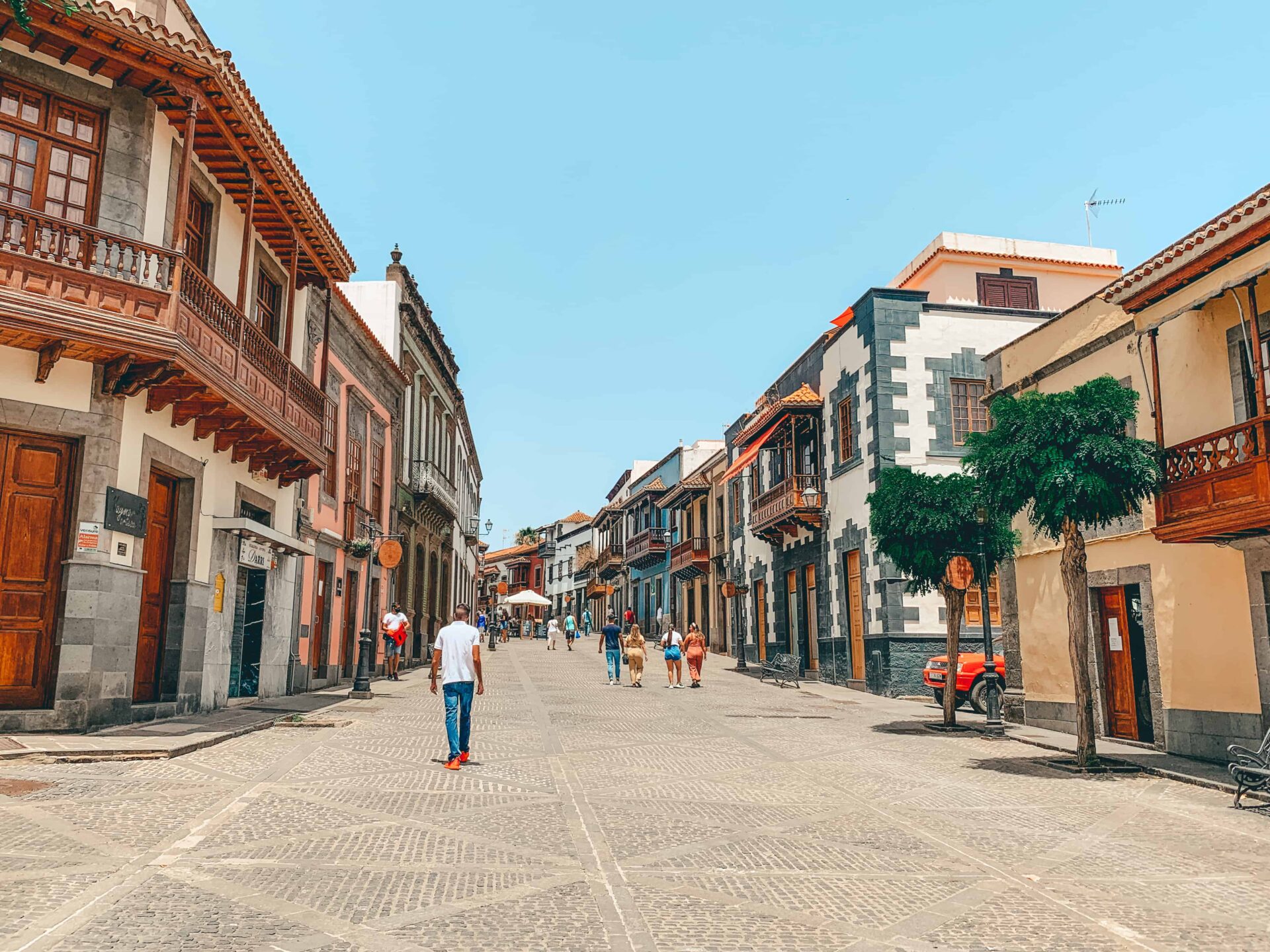
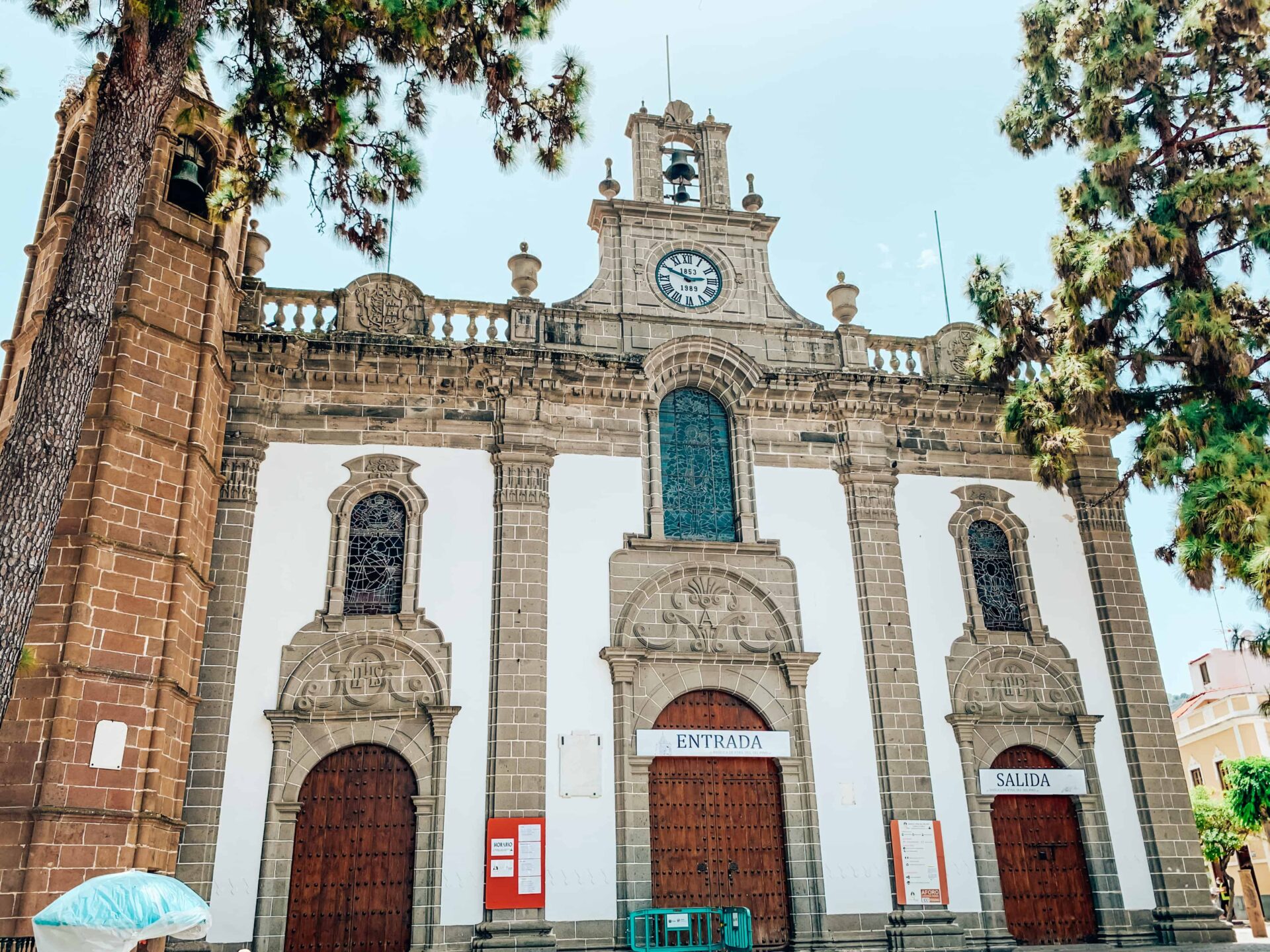
Pico de Bandama
The Canary Islands are all volcanic islands, including Gran Canaria. One of the largest non-active volcanoes on the island is Pico de Bandama. However, this volcano has collapsed, creating a large crater. The diameter of this crater is over one kilometer, and it has a depth of about 200 meters. During a walk of about 3 hours, you can explore the inside of the crater. However, this walk is quite challenging because the return trip is uphill to get out of the crater. There is also a viewpoint at the edge of the crater where you can enjoy this beautiful and unique environment without taking a walk.
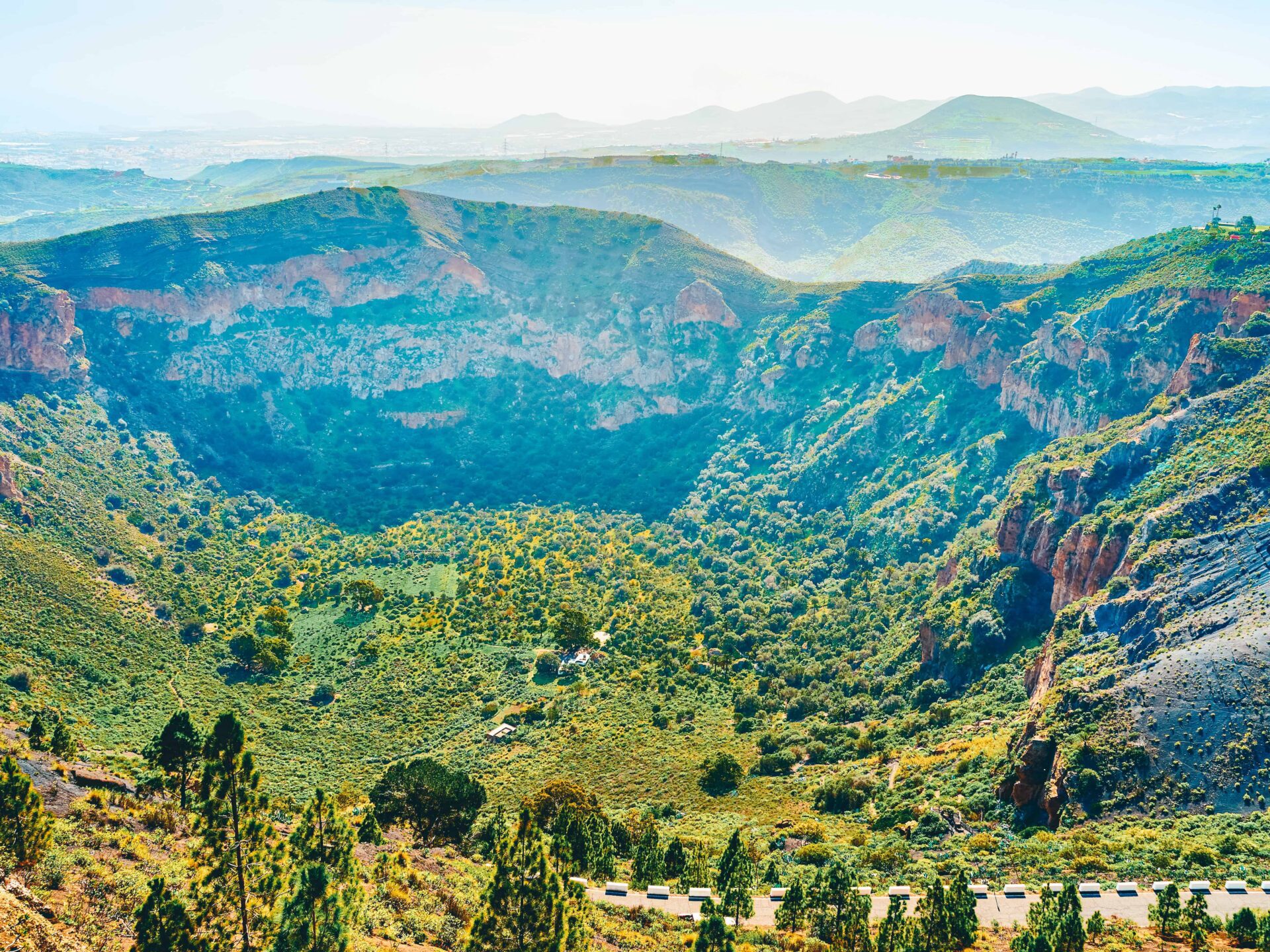
Playa del Ingles
Playa del Ingles is the most famous resort town in Gran Canaria. This bustling place in the south of the island is also called the beating heart of the island. This place has a kilometer-long sandy beach full of beach beds and the most diverse water sports. Along this fine sandy beach is a cozy boulevard full of restaurants, shops, and arcades. The ideal start to a beautiful evening for young and old. In addition to the beach and the boulevard, Playa del Ingles has many hotels and apartments. The Centro Comercial, a little further away from the beach, mainly has many nightlife venues and bars, including a large Heineken Café.
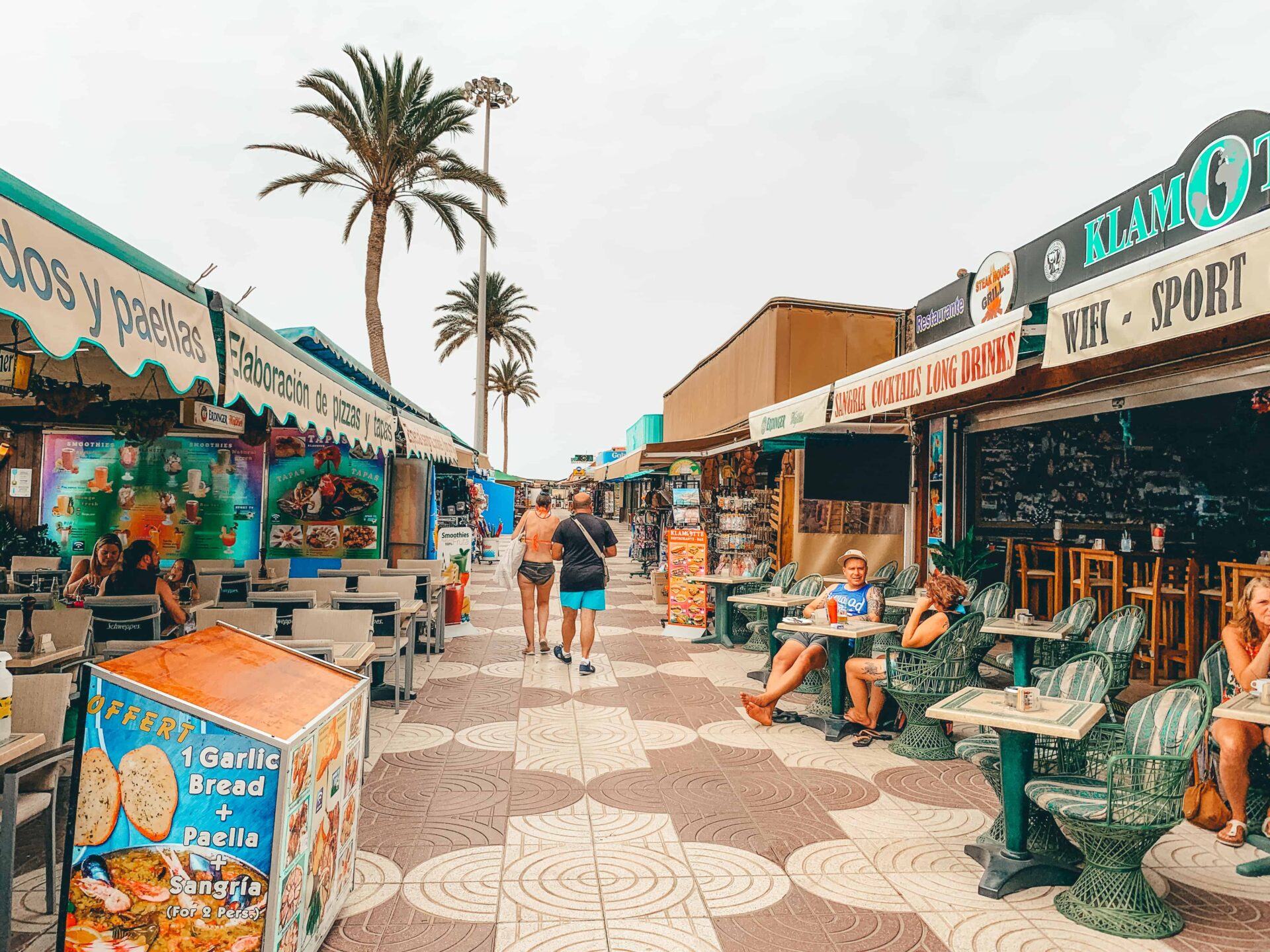
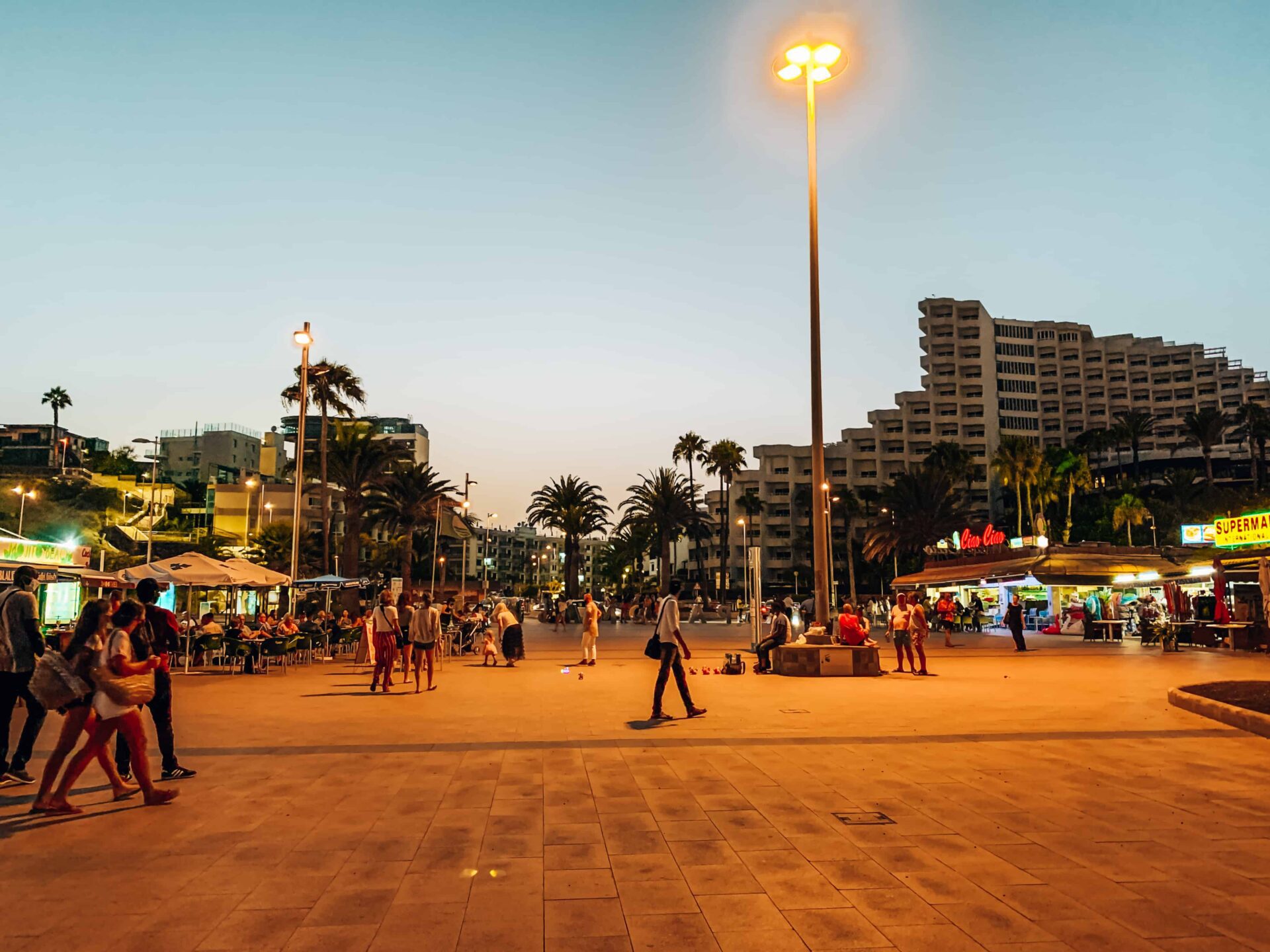
Gáldar
One of the most authentic villages on the island is the relatively small Gáldar. Located at the foot of the mountains and only 27 kilometers from the capital Las Palmas. With cozy narrow streets, a local market on Sunday, one of the most beautiful churches on the island, and fine (tapas) restaurants at Plaza de Santiago, this village should certainly not be missing from this list. In the center, you will also find the archaeological park with Cueva Pintada, a painted cave. This is one of the most important sites of a cave painting in the Atlantic Ocean.
Cost: A ticket for the archaeological park costs €6 for an adult. There is a reduced rate of only €3 for seniors aged 65 and over and students up to 23 years old. Children under 18 do not need a ticket.
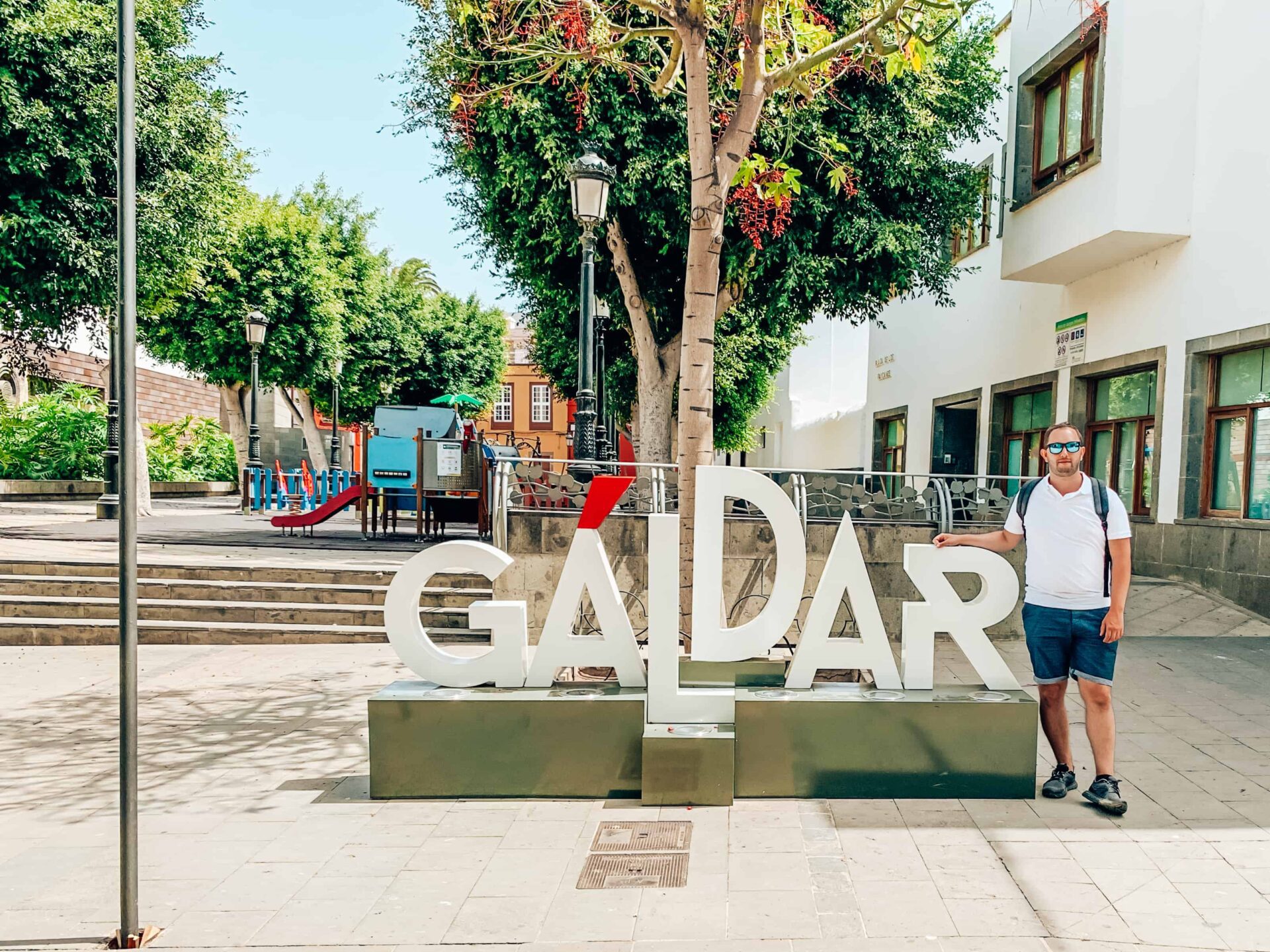
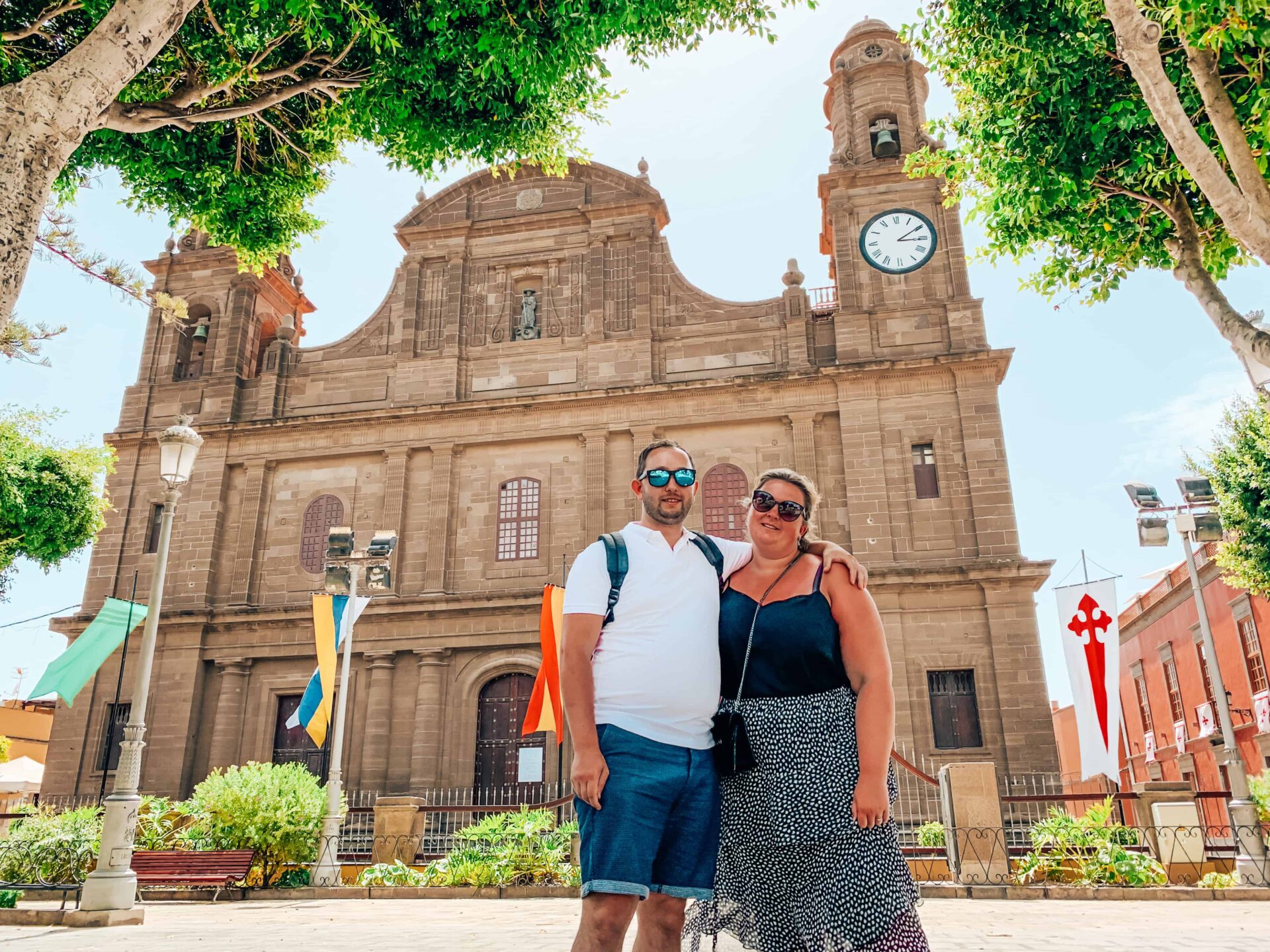
Artenara
Artenara is the highest village in all of Gran Canaria. From this old village, you have a beautiful view of parts of the island. On some viewpoints, Roque Nublo is even visible. This makes it a nice attraction in itself. However, there is more to be found in this authentic village. The village is also known for its caves. For example, you will find houses that are completely carved out of the rocks or built in the caves. In addition, Artenara has a cave chapel called La Ermita de la Cuevita. The altar, the pulpit, the confessional; everything in this chapel is carved into the rocks. Every year, a big celebration takes place on August 15th to honor the Virgen de la Cuevita.

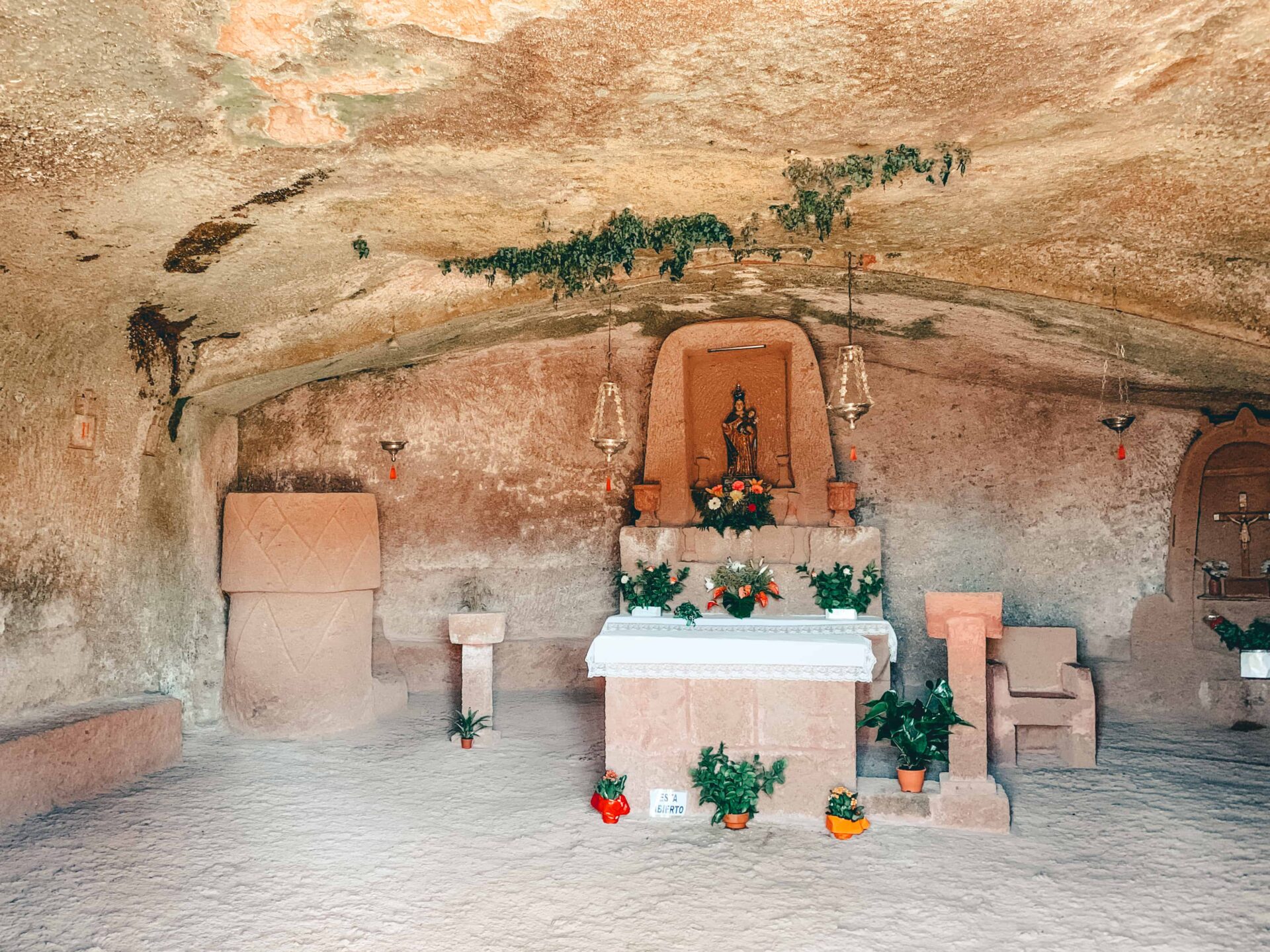
Rum factory in Arucas
Arucas is mainly known for its more than 100-year-old rum factory. With over two million liters of rum, this is one of the largest distilleries in Europe. The popular Canarian Arehucas rum is brewed in this factory. In the mornings (9:00 – 14:00) from Monday to Friday, it is possible to take a tour of the factory including a small rum tasting. To prevent a tour from being fully booked, it is recommended to call the factory in advance.
In addition to the rum factory, Arucas itself also has something to offer. The old district is designated as cultural heritage and has a lot of beautiful architecture. The most important building in the city is the Church of San Juan Bautista, which still has great social value for the city.
Costs: a ticket costs € 4.20 and entrance for children is free.
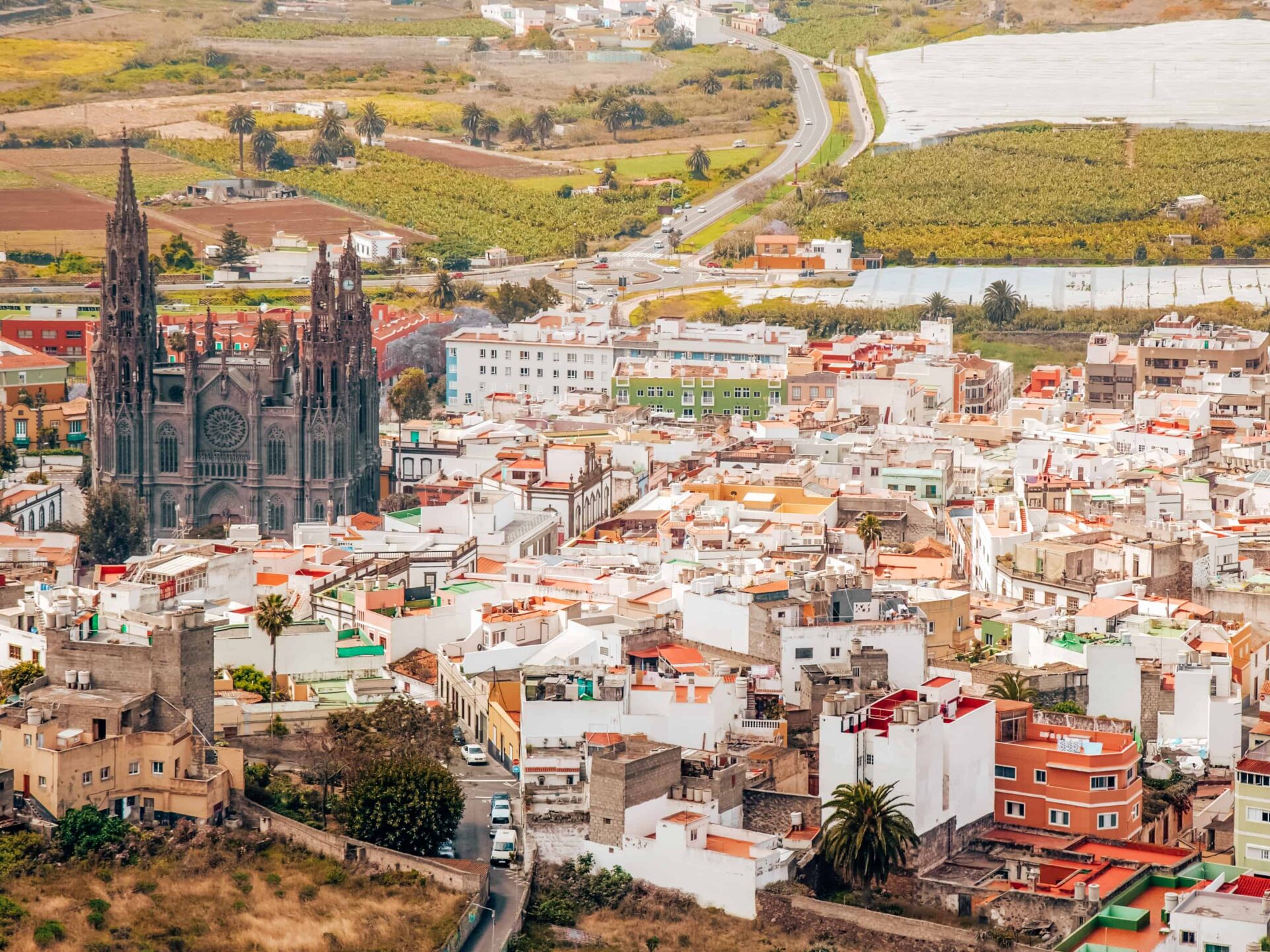
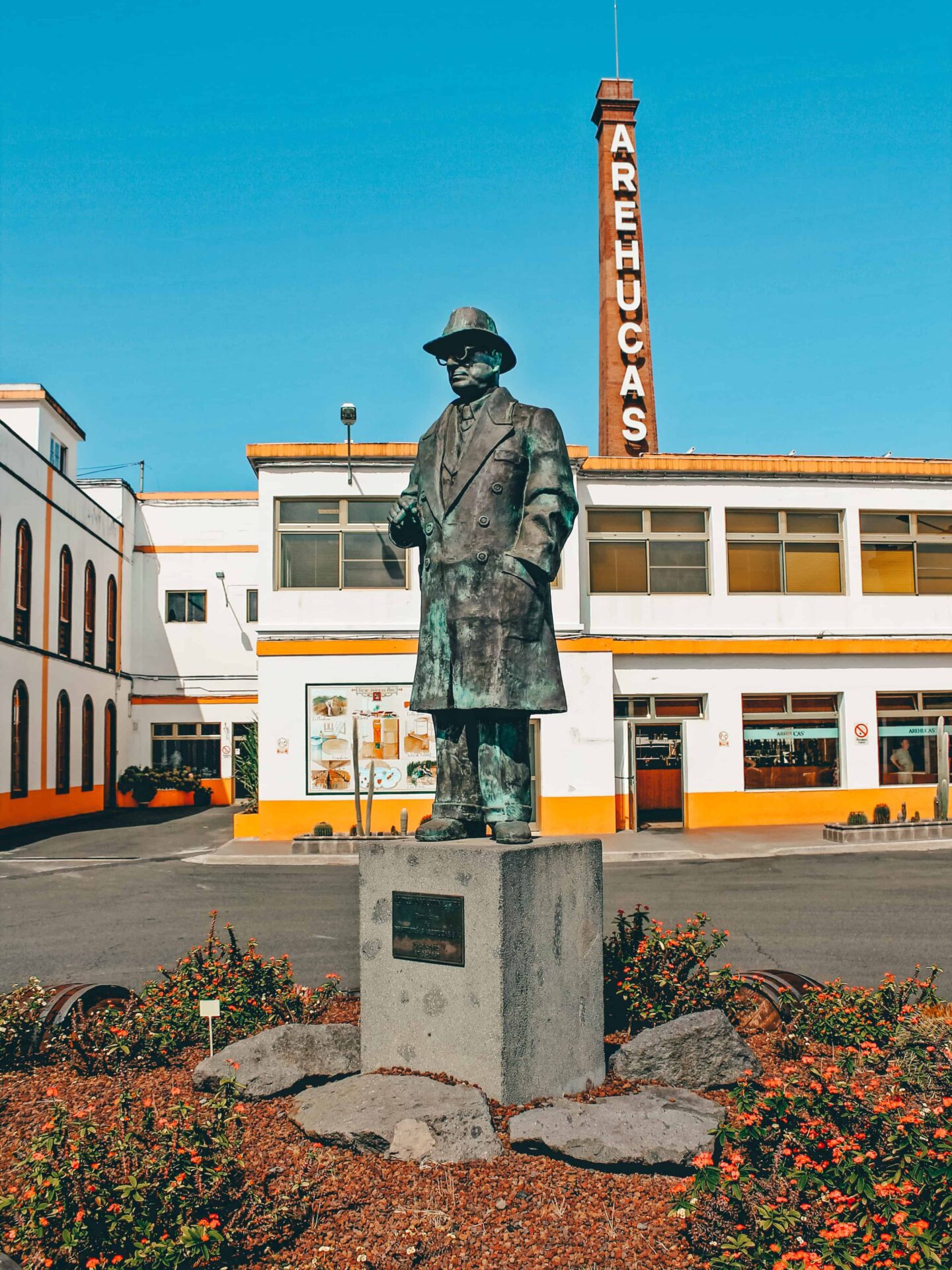
Barranco de Fataga and Fataga
Barranco de Fataga is a large and impressive ravine where thousands of palm trees grow. It is one of the most spectacular places on the entire island and only a 30-minute drive from Playa del Ingles. When you drive from the south of the island to the ravine, you will come across a viewpoint along the way. From this viewpoint, you have a beautiful view over the entire ravine. Fataga is a picturesque village in the valley of Barranco de Fataga. This small village is completely surrounded by thousands of palm trees and mountain slopes, and has typical Canarian architecture and narrow streets.
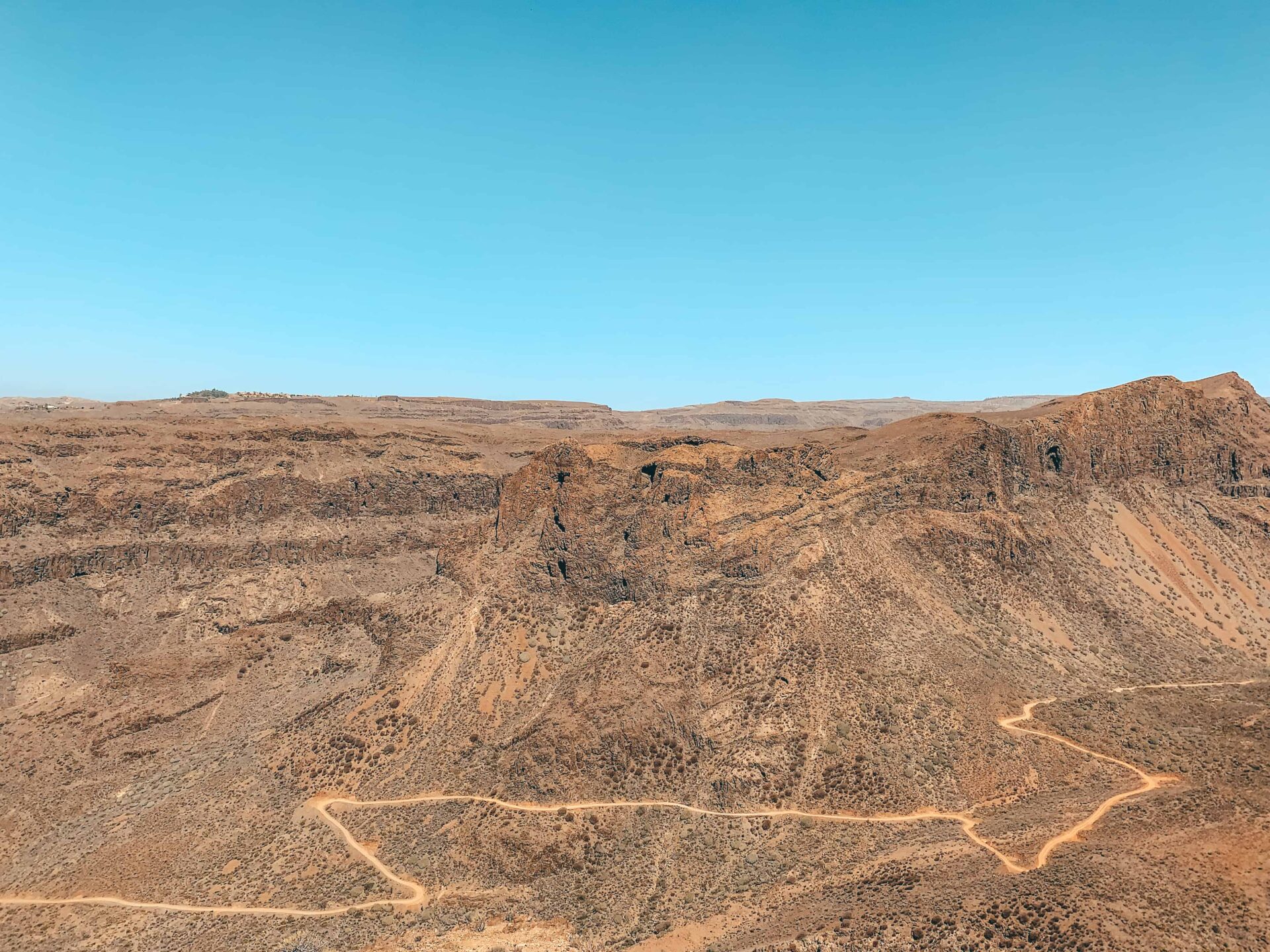
Pico de las Nieves
With its 1949 meters, Pico de las Nieves is the highest point of Gran Canaria. The mountain is located in the middle of the island and you will find a viewpoint here which is accessible by car. In good weather, from this point you have not only a view of a large part of Gran Canaria, but also Tenerife is clearly visible. Due to the height of this mountain, snow can fall in the winter months, while temperatures at the coast are good enough to lie on the beach.
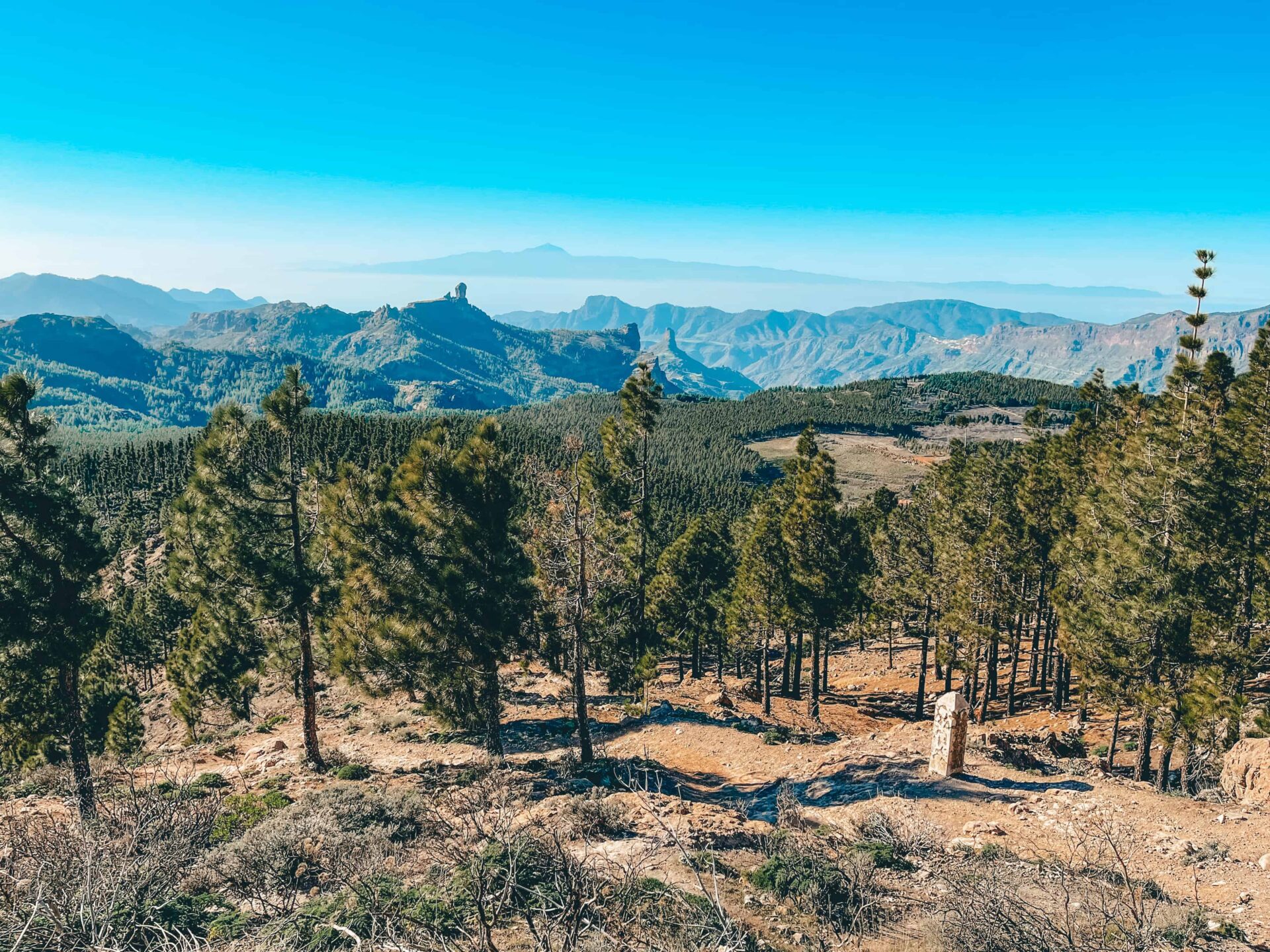
Tejeda
This picturesque village is located in the middle of the mountains. It is characterized by the many white houses, beautiful views, and almond trees. You will find many shops selling a local delicacy made from almonds. In addition, Tejeda has a parish church, a museum about the famous Canarian sculptor Cárdenes, and several caves.
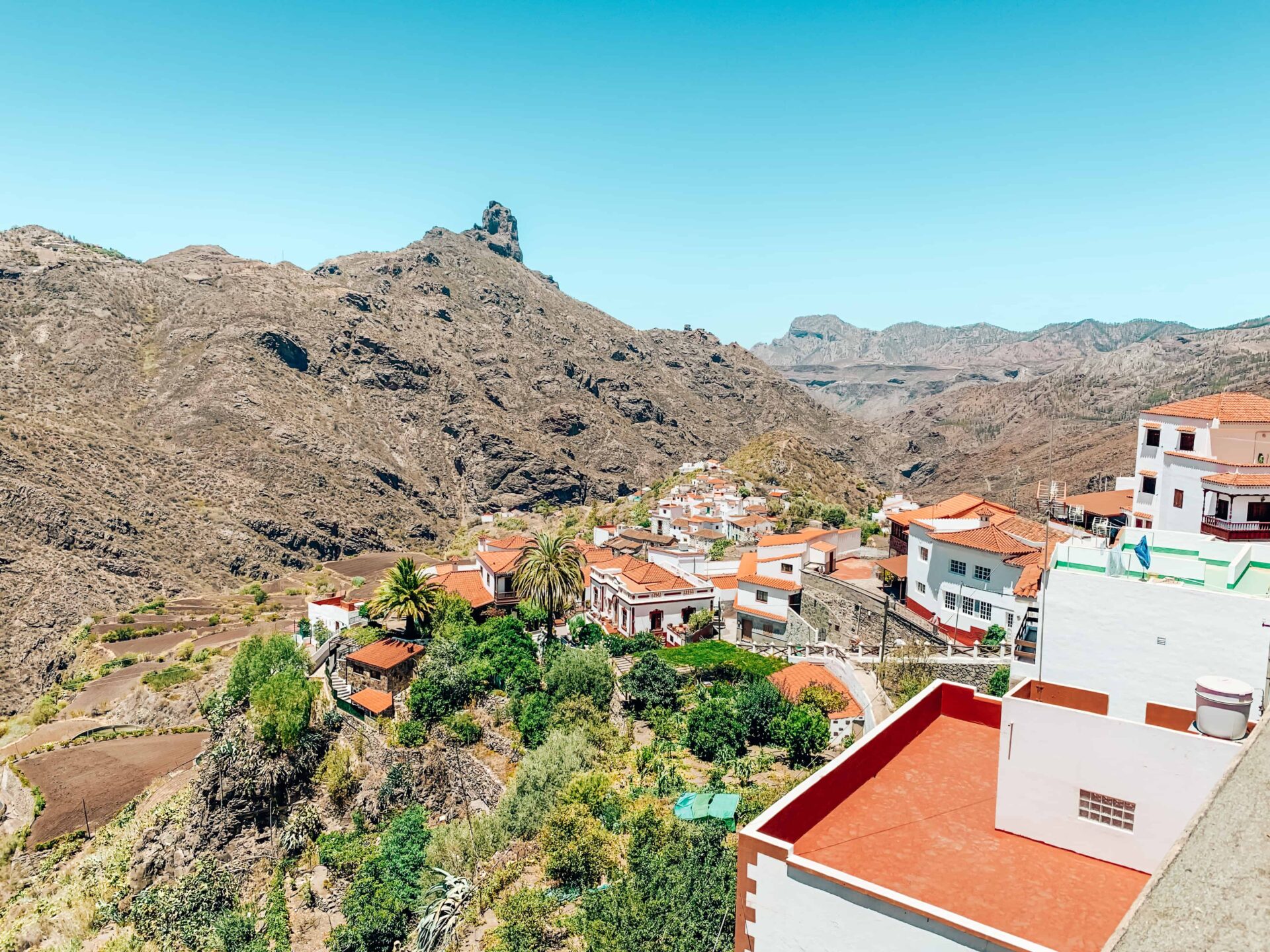
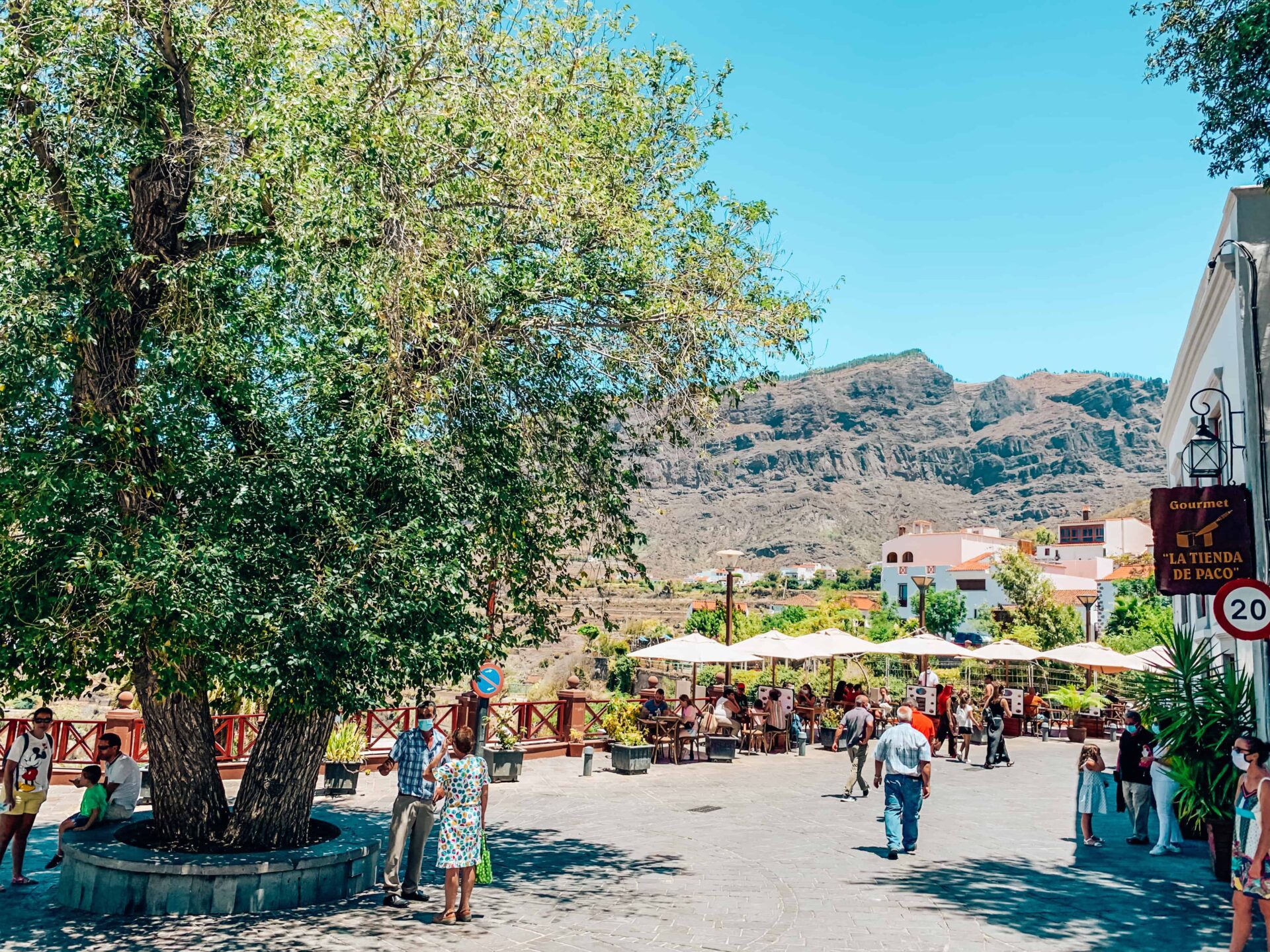
Puerto de Mogán
Puerto de Mogán is a well-known coastal town in the south of Gran Canaria. The village is not particularly large, but definitely worth a visit. It is also called the Venice of Gran Canaria or little Venice, because of its many canals and narrow bridges. In addition, it has many white houses with colorful accents and many flowers. There is also a marina and a pleasant boulevard along a fine sandy beach with calm water. When it is high tide, this is a fantastic place for snorkeling.
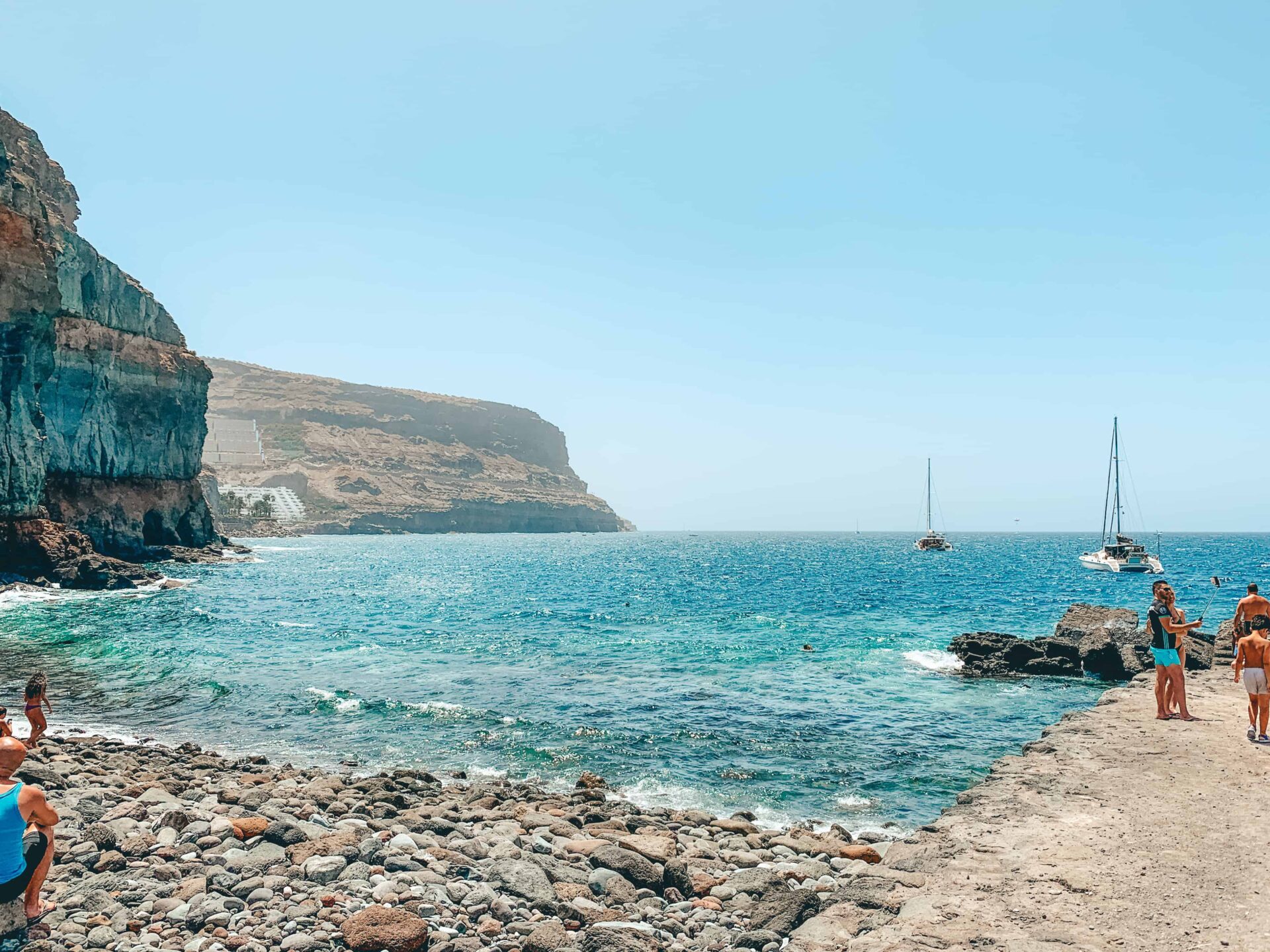
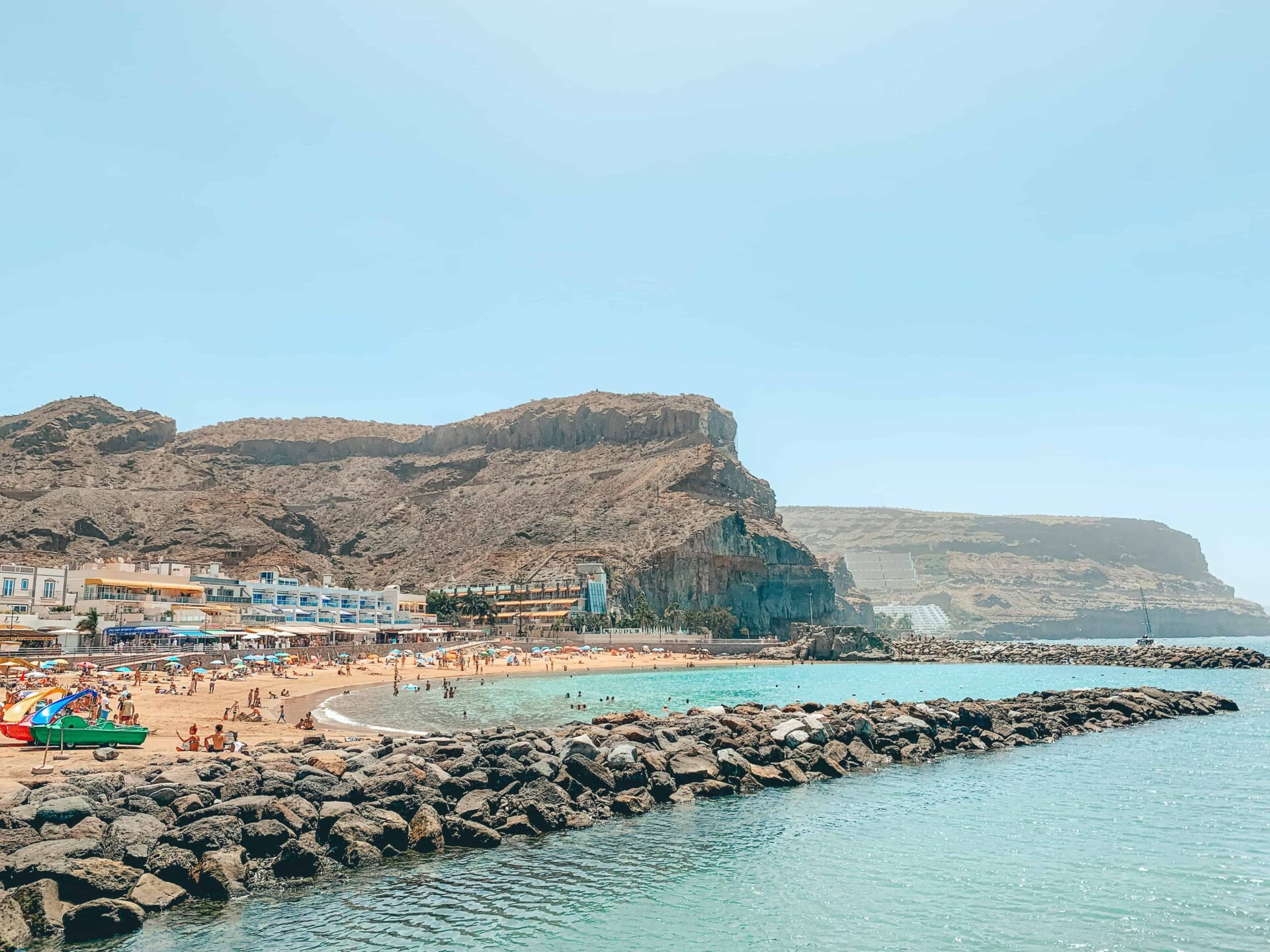
Aqualand
The largest water park in Gran Canaria is Aqualand. This is the ideal day trip for families with children, as you can enjoy various slides, pools, and water attractions. There are no less than 33 slides and 13 attractions in the 130,000 m2 water park. There are also plenty of restaurants, facilities, and extensive gardens within this water park. The park is open all year round from 10:00 to 17:00. It is advisable to buy a ticket in advance.
Costs: There are different types of tickets available for Aqualand. A standard ticket for an adult costs €33. A ticket for children (5 - 10 years) and seniors is €24. For younger children (3 - 4 years), a ticket costs €12.50, and children under 3 are free. In addition to this standard ticket, there are also special deals available, such as a two-day pass. There are also special discounts for families (two adults and two children) or groups of friends (4 adults). In addition, residents of the Canary Islands receive a small discount on tickets.
